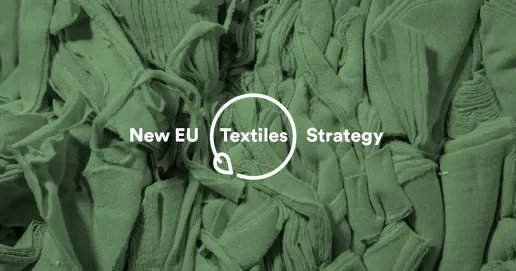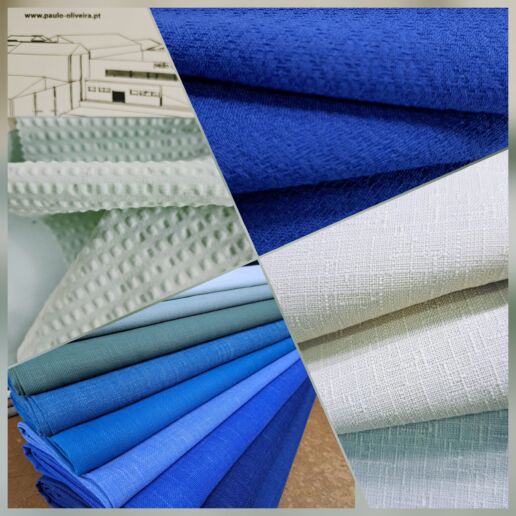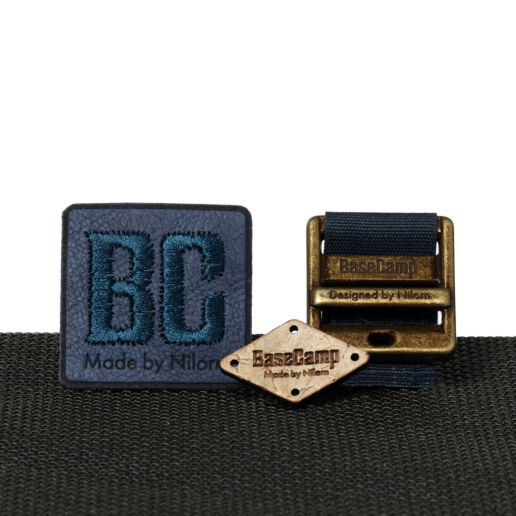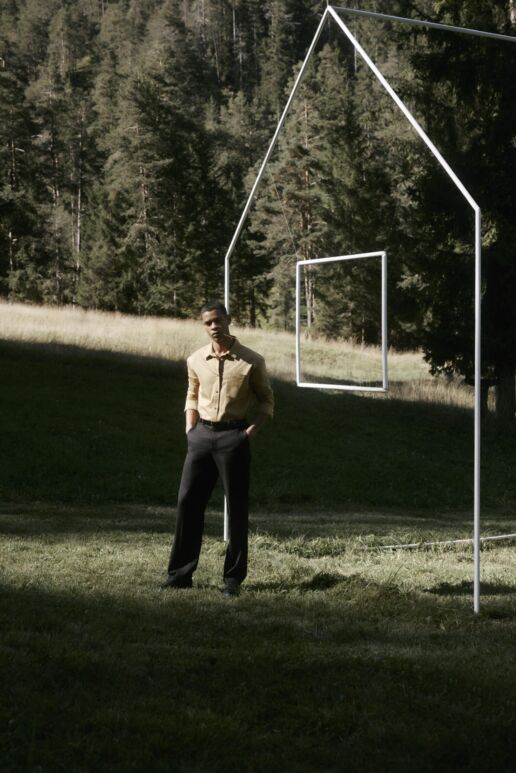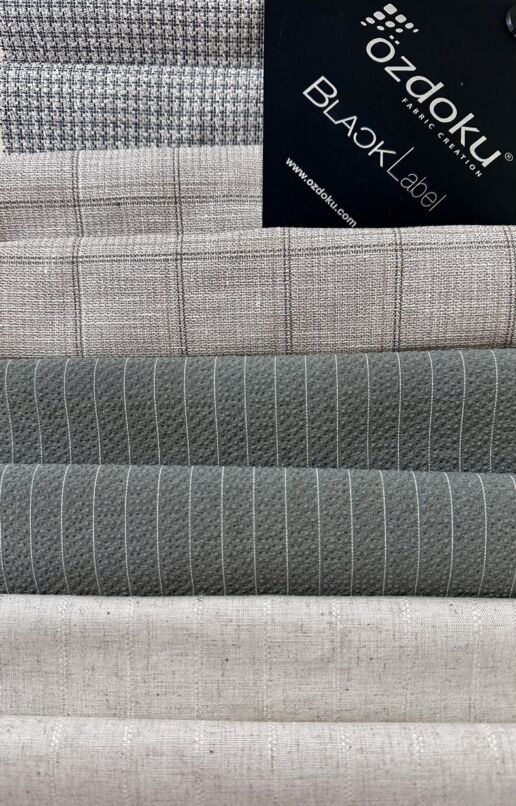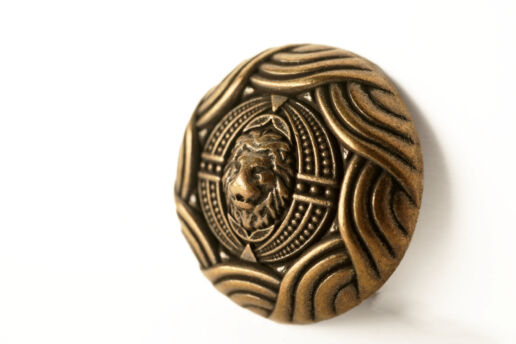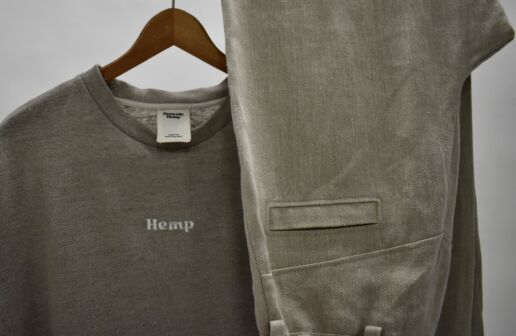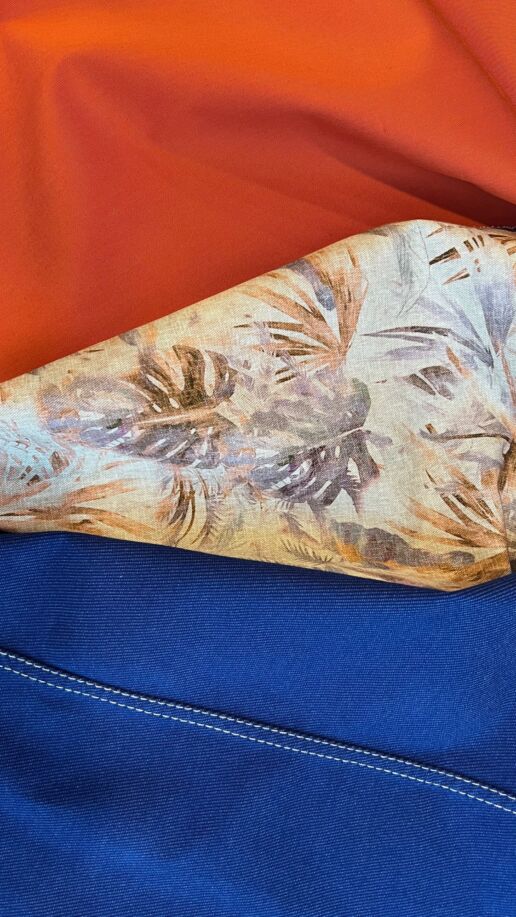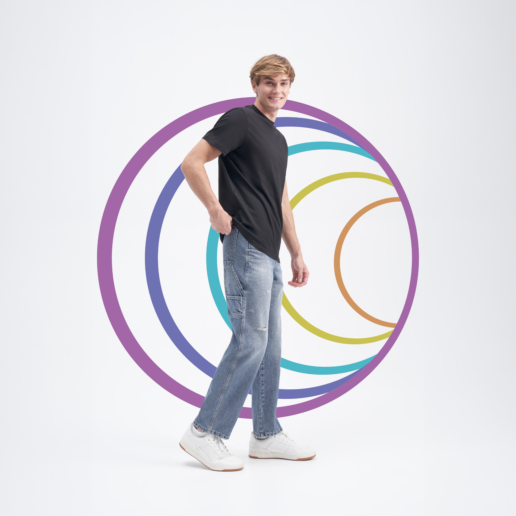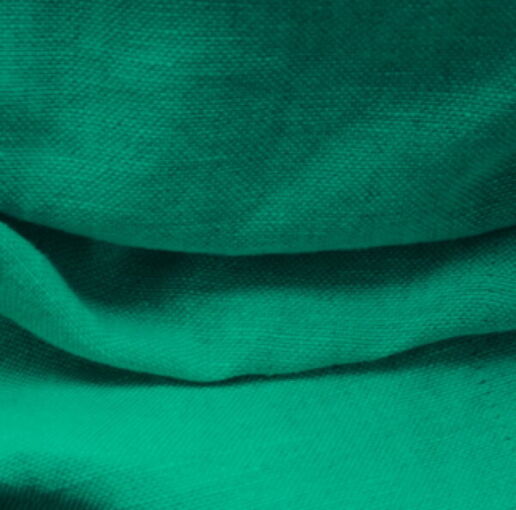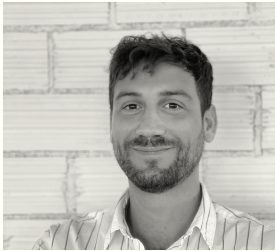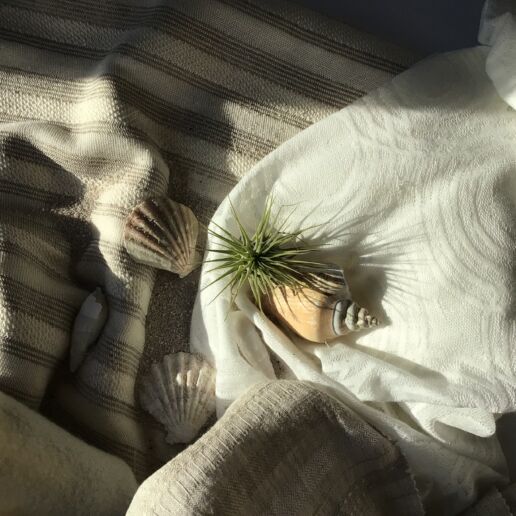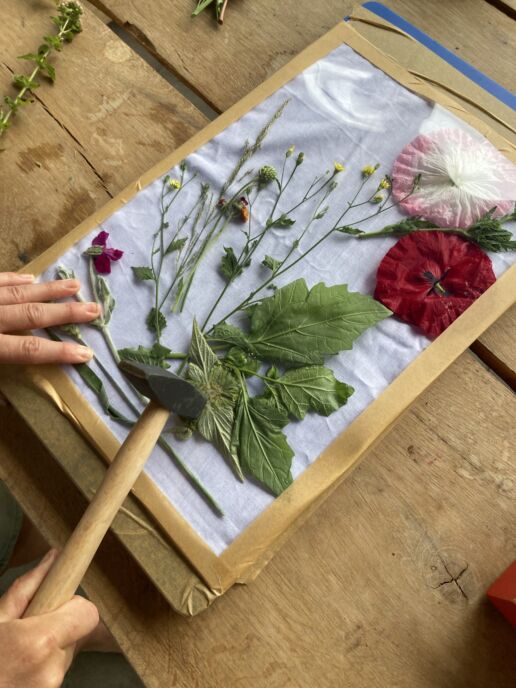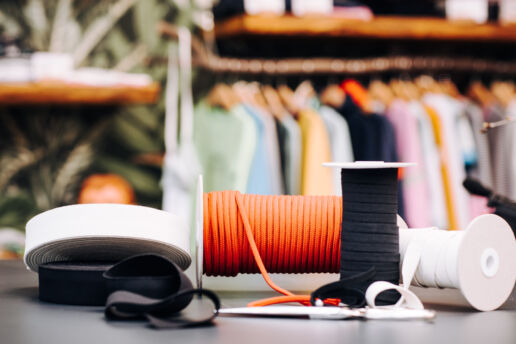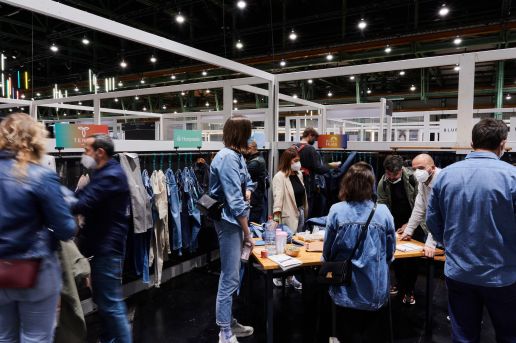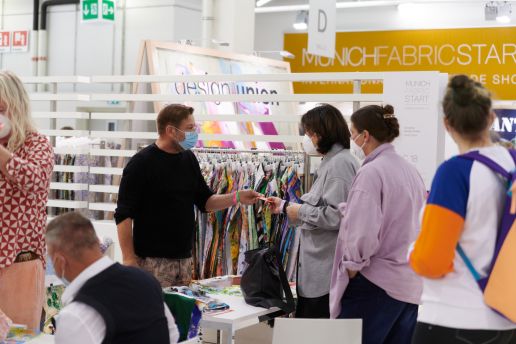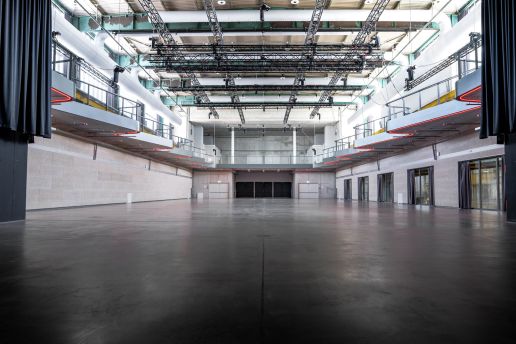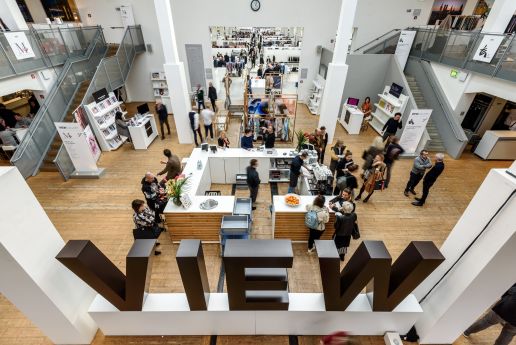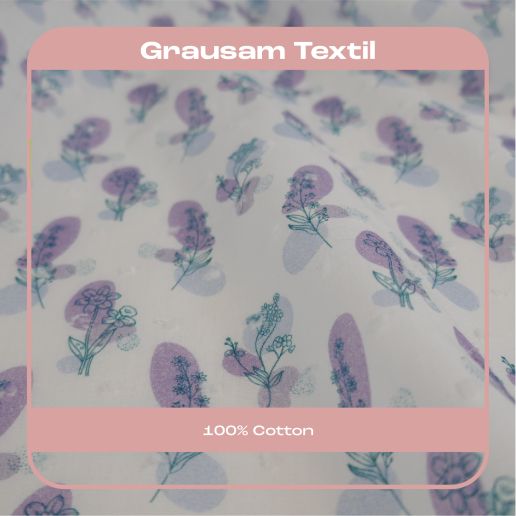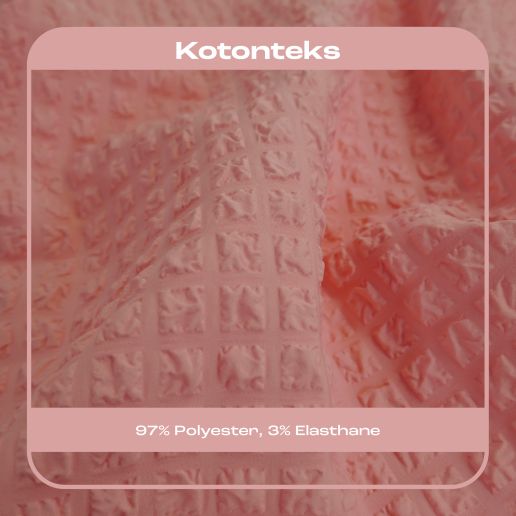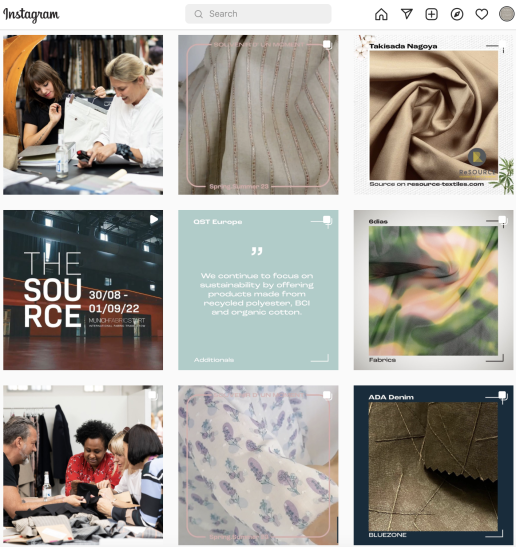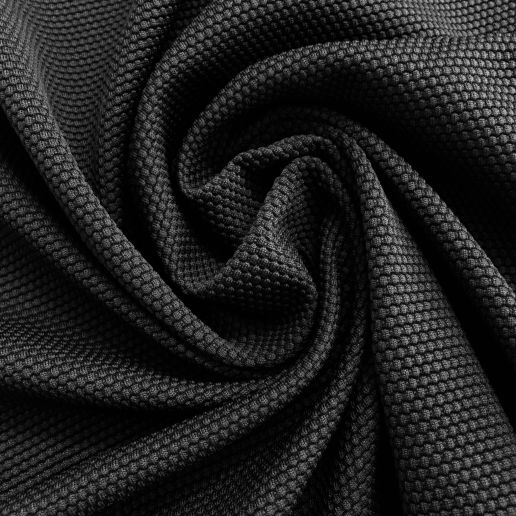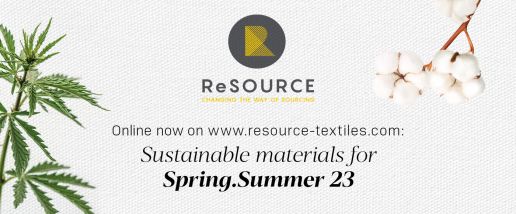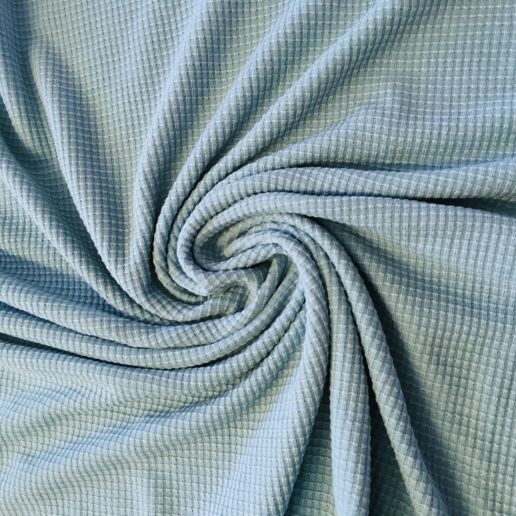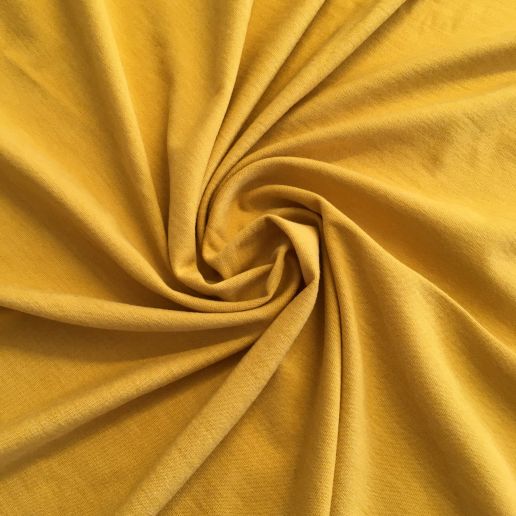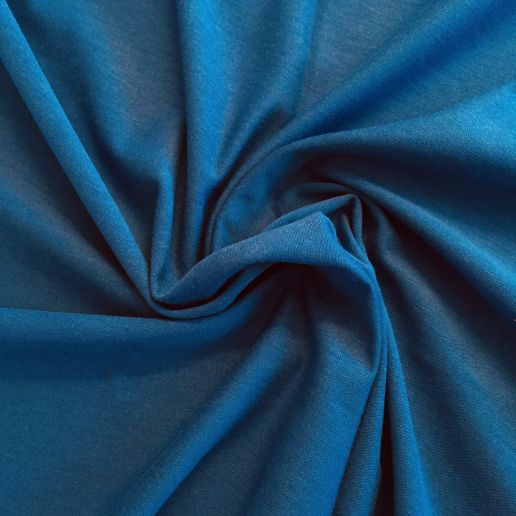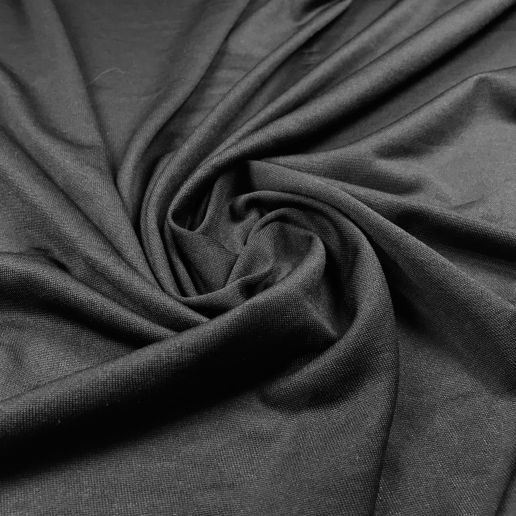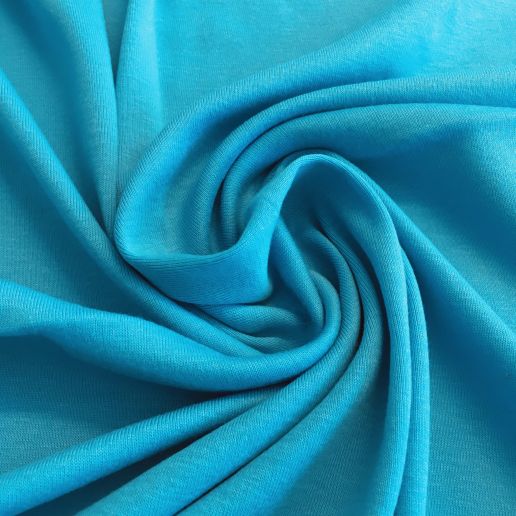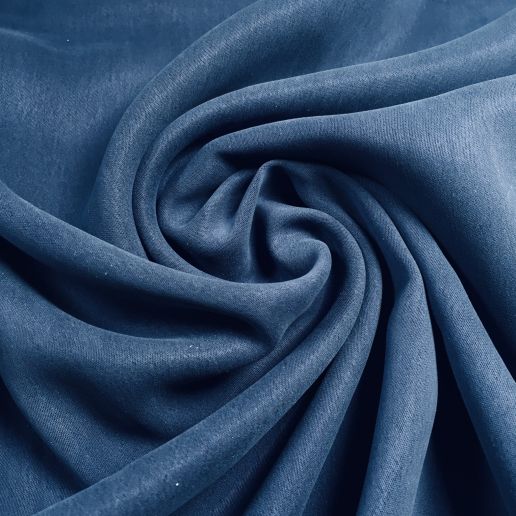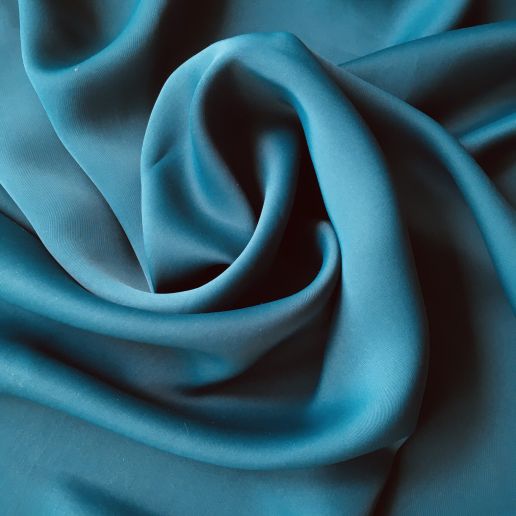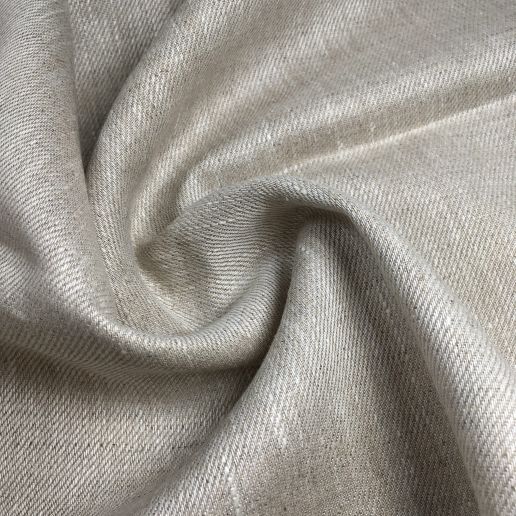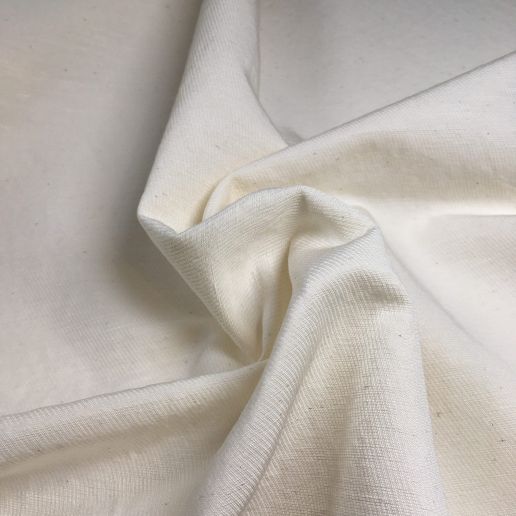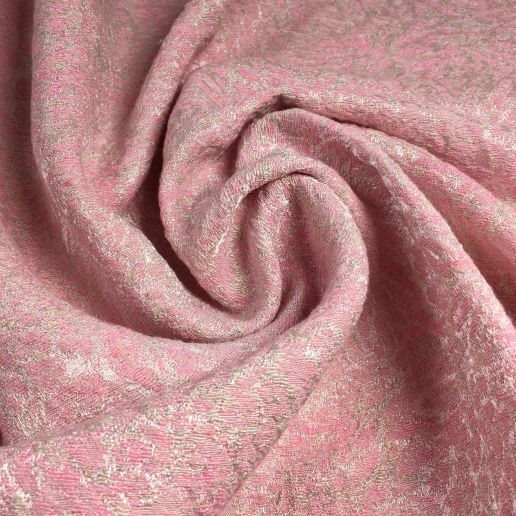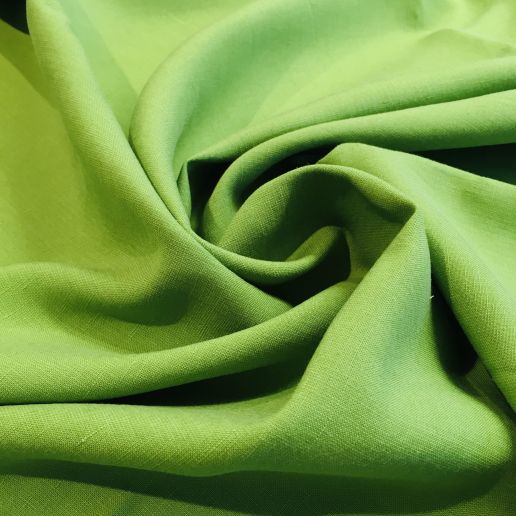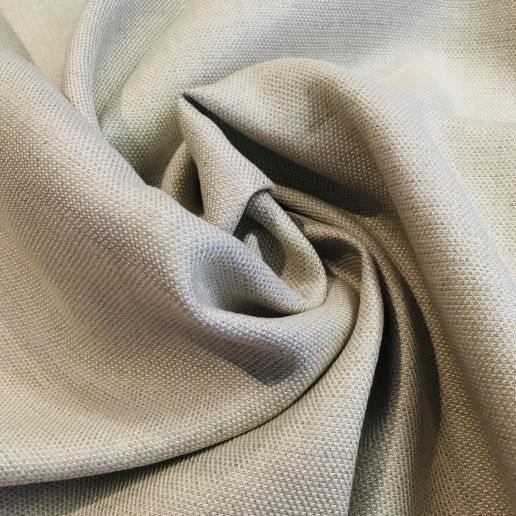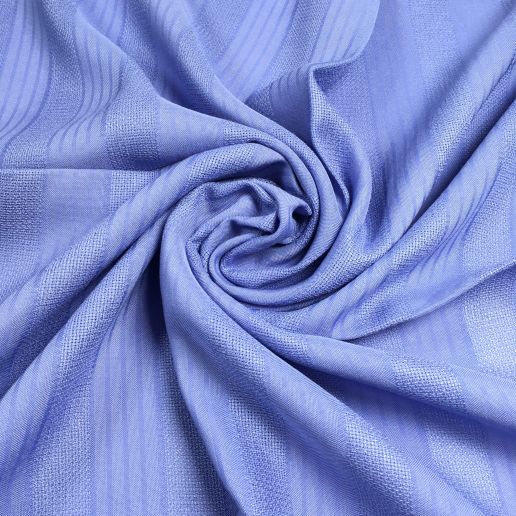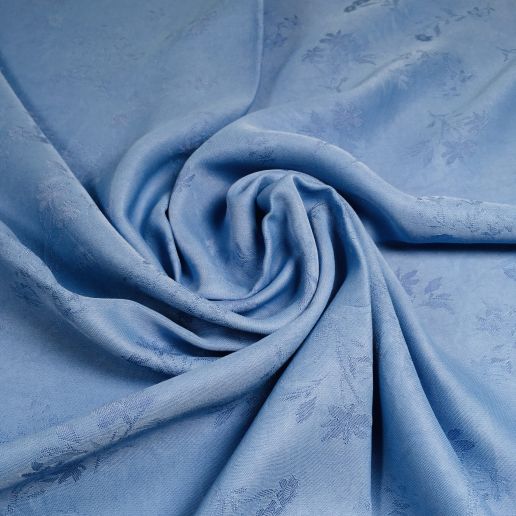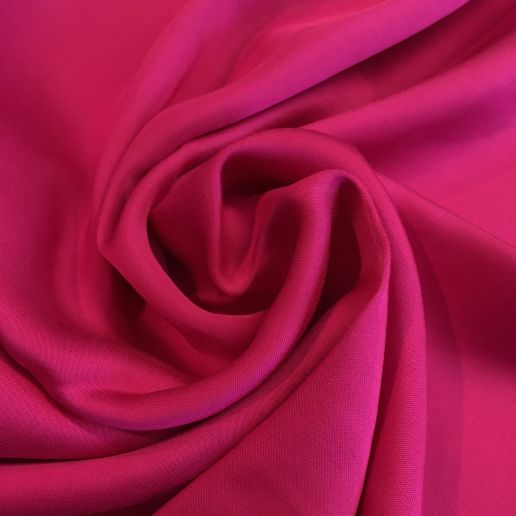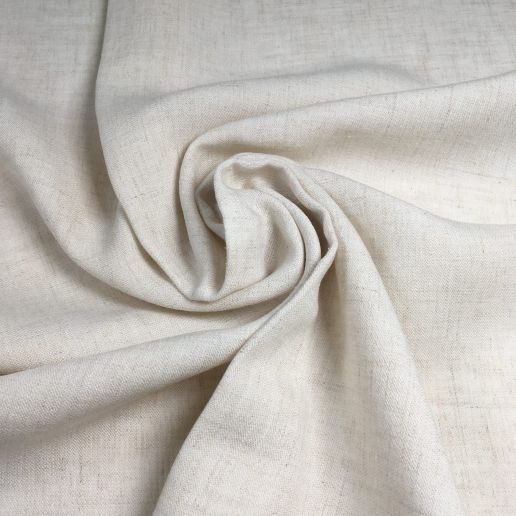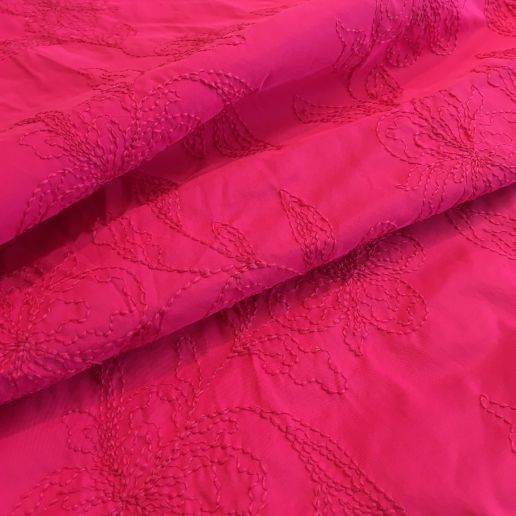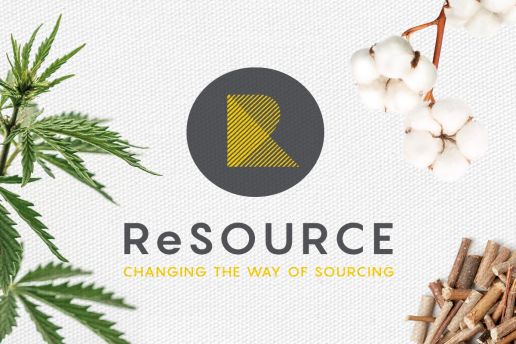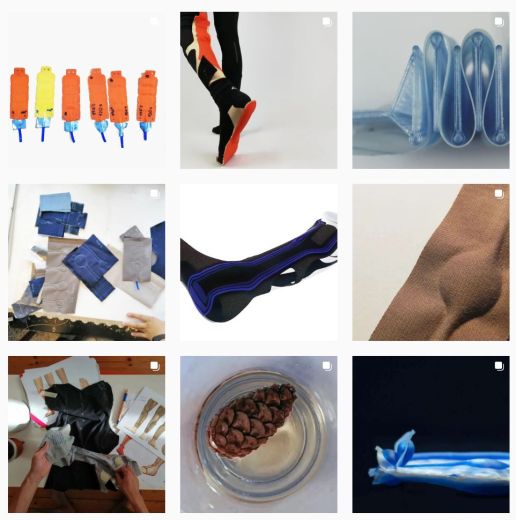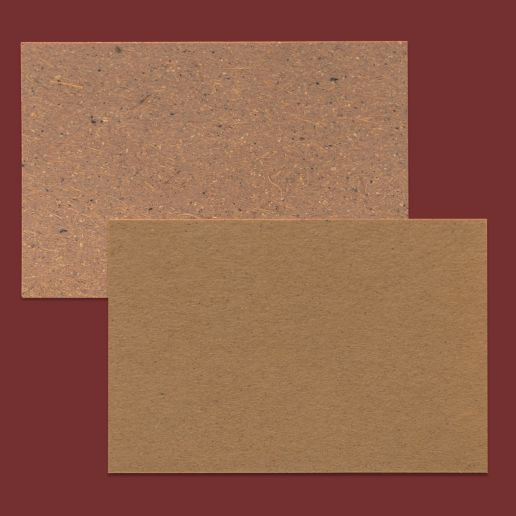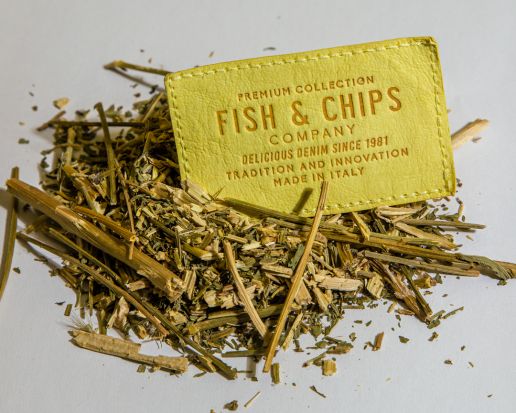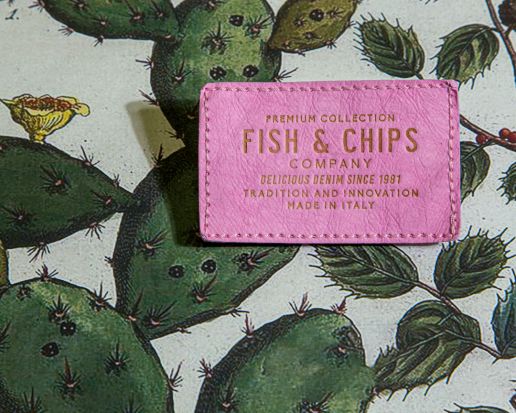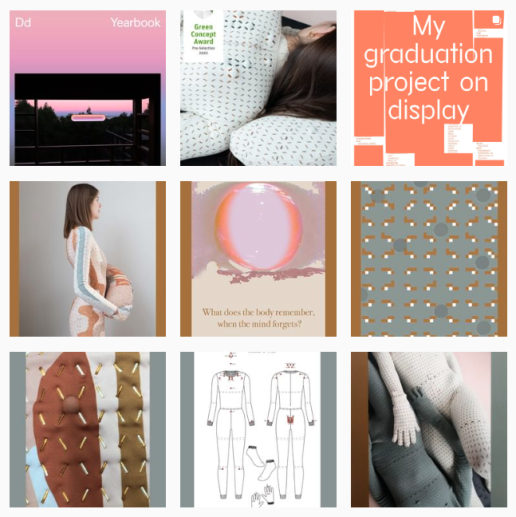Sustainability
The New EU Textiles Strategy: 15 Things You Need To Know
The New EU Textiles Strategy: 15 Things You Need To Know
A contribution of Muchaneta ten Napel, Founding Editor-in-Chief FashNerd.com
The fashion industry produces 92 million tonnes of waste. It is also responsible for 10% of the world’s carbon emissions. The ugly truth is that the way that the fashion industry does business is making an unsustainable impact on natural resources and the environment at each stage of the supply chain.
So what can be done to minimise an industry-wide problem’s carbon and environmental footprints? Well, this is where the new EU Strategy for Sustainable and Circular Textiles comes into play.
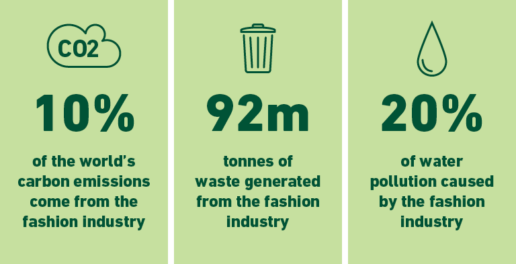

Is It Empowering the Green Transition?
More than just another set of rigid rules, the new EU textiles strategy is driven to address the need for businesses to take responsibility and act to minimise their carbon and environmental footprints. Proposed by the EU Commission, the plan has been set up to help the EU shift to a circular economy that can tackle fast fashion, textile waste and the destruction of unsold textiles. The strategy also aims to encourage businesses to participate actively in the co-creation process through their commitments to circularity and circular business models.
As part of the EU Green Deal, the strategy proposes to make sustainable products “the norm in the EU.” Pushing forward the idea that all production fully respects social rights, the plan also calls on companies to make textiles more durable, repairable, reusable and recyclable.
Bringing attention to a product’s lifecycle, the strategy focuses on design through to end-of-life. The agenda is to kickstart actions that ensure that by 2030 textile products placed on the EU market will be more eco-friendly and long-lasting.
With so much change promised, the Commission’s proposal of new rules can be complex for some to unpack. So here are ten things you need to know about the new EU Strategy for Sustainable and Circular Textiles.
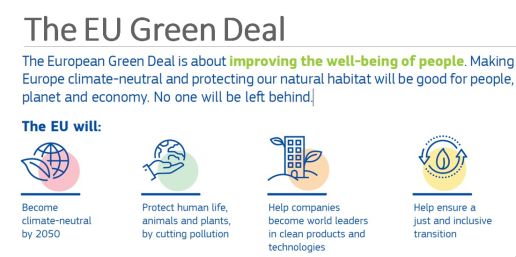
15 Things you need to know
- The new strategy is part of a much broader package, including as many as 16 new legislative actions and other policies that will directly impact the textile value chain.
- Create a model of thriving green and digital transition in manufacturing.
- The strategy will require manufacturers to give consumers more information on how to reuse, repair and recycle clothing.
- The goal is to phase out fast fashion and have more businesses commit to business models that allow for the reuse and repair of products to be widely available.
- In the textile sector, the strategy hopes producers will take responsibility for their products along the value chain, including when they become waste.
- Promoting the circular textiles ecosystem, the EU textiles strategy aims to support and accompany the textiles ecosystem throughout its transformative journey.
- By supporting innovative fibre-to-fibre recycling, the plan is to reduce, to a minimum, the incineration and landfilling of textile waste.
- Solutions and measures include more precise information, a Digital Product Passport and a mandatory EU extended producer responsibility scheme.
- The strategy highlights the need for accuracy regarding green claims by proposing new consumer rights and a ban on greenwashing.
- Reverse overproduction and overconsumption, and discourage the destruction of unsold or returned textiles.
- Propose mandatory Extended Producer Responsibility for textiles with eco- modulation of fees.
- Address the unintentional release of microplastics from synthetic textiles.
- Restrict the export of textile waste and promote sustainable textiles globally.
- Incentivise circular business models, including reuse and repair services.
- Adopt favourable taxation measures for the reuse and repair sector. Lastly, the new EU Strategy for Sustainable and Circular Textiles end game is to make the EU market more friendly to the environment, circular, and energy-efficient and bring balance back to global supply chains. So to conclude, yes, the EU textiles sustainability strategy is very ambitious, but this is why it is critical that it is implemented correctly.
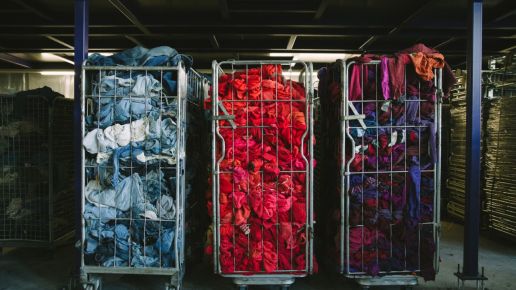
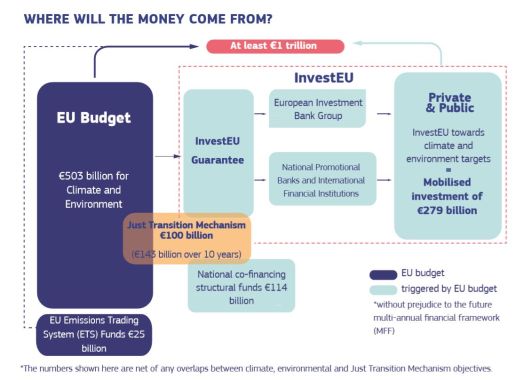
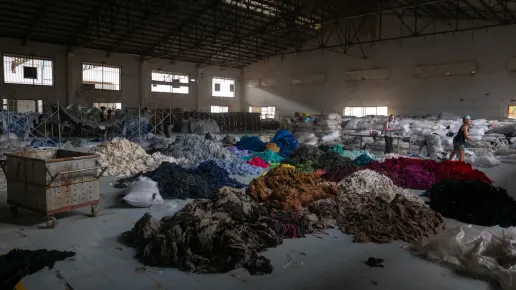
Are you interested in more in-depth facts and figures of the new textile economy?
Visit the FashNerd.com Lounge at H5 | 28 or join their mini lectures Keyhouse.
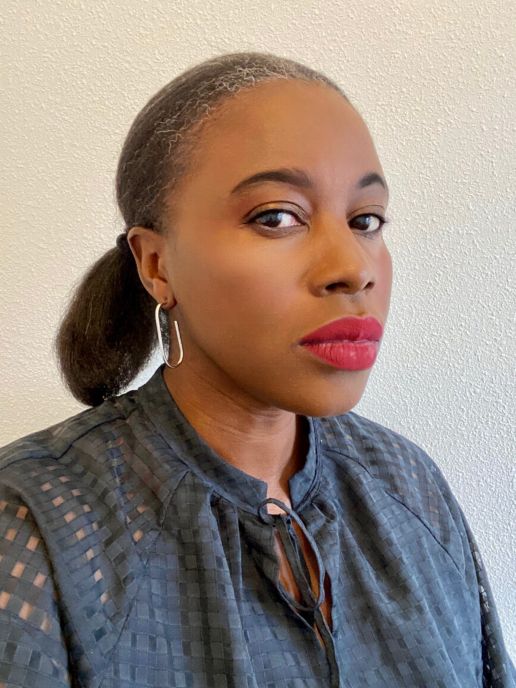
About the author
Founding editor-in-chief of FashNerd.com, Muchaneta has worked in the fashion industry for over 14 years. She is currently one of the leading influencers speaking and writing about the merger of fashion with technology and wearable technology.
Muchaneta ten Napel | editor@fashnerd.com
THIS MIGHT BE ALSO INTERESTING FOR YOU
DESIGN STUDIOS – SPRING.SUMMER 25 II
2. May 2024
The exhibited designs are characterised by the versatile use of craftsmanship and technology.
Fabric Trends Spring.Summer 25 – Part VII
30. April 2024
They specialize in crafting eco-sustainable fabrics and jerseys using in-house developed yarns.
The latest accessory developments for Spring.Summer 25 – Part IV
25. April 2024
At the core of MONO‘s philosophy lies the idea of using single or minimal materials that are easily separable, making reuse and recycling for garments more accessible and efficient.
BLUEZONE Signature Spring.Summer 25 – Part III
23. April 2024
The aim is to showcase not only the Japanese heritage ofthe ancient hand-stitch technique but also to raise awareness about the significance of repairing and repurposing clothing.
Fabric Trends Spring.Summer 25 – Part VI
18. April 2024
With a rich legacy and a focus on sustainability, they offer a diverse range of ecofriendly fabrics like Modal, Tencel, Linen, Organic and Regenagri Cotton. Their commitment to quality meets the latest fashion trends through innovative designs.
The latest accessory developments for Spring.Summer 25 – Part III
16. April 2024
With new recycled materials and innovative dyeing techniques, they create environmentally friendly designs. Organic polyester gives additional sustainability, while customised designs emphasise personal style.
Honestly Hemp – Sustainable Innovations
11. April 2024
Her vision: to create an entire outfit made wholly from hemp fibre and end the stigma surrounding the plant.
Fabric Trends Spring.Summer 25 – Part V
9. April 2024
At the heart of this collection is Q-Cycle by Fulgar™, a revolutionary approach that incorporates end-of-life tires into the mass balance technology used during its production, minimizing waste and giving a new life to materials that would contribute to environmental challenges.
BLUEZONE Signature Spring.Summer 25 – Part II
4. April 2024
The designer has given free rein to his creativity to develop his vision of high quality, making increased use of ISKO's Ctrl+Z material science.
BioBase – Sustainable innovations
2. April 2024
The project targets the establishment of biobased polymers in the textile industry, demonstrating their full potential.
Vifrex Studio - Experts in Fabrics Design and Production from Barcelona
This season we are profiling some of the exhibitors showcasing at MUNICH FABRIC START 2022. We are excited to present you VIFREX STUDIO.
With years of professional experience in the textile sector and the main Spanish retail group, Joan Vilalta founded VIFREX STUDIO in 2017. Located in Barcelona and Istanbul, the company covered all the needs from design, commercial area, planning and quality control, expanding to the vertical production of garments.
Known for the design, production and sale of fabrics, we decided to take a moment with Luigi Maria Cialdini of VIFREX STUDIO to discuss the company’s drive, challenges and newest developments.
You are specialists in textile design; what services does VIFREX Studio offer?
We are a team of fabrics designers and textile engineering. We provide our customers with a personal fabric designer that can help and assist in all the developments, proposing trends and mood boards for their needs.
What would you say your strengths are?
Quick development process starting from trends, colours, and base qualities proposals.
When it comes to sustainability, can you elaborate on your green strategies so far?
All our items meet the highest sustainable standards. We possess all the certifications like OCS, GRS, BCI, and CARE FOR WATER. More than 90% of our last year’s productions were sustainable.
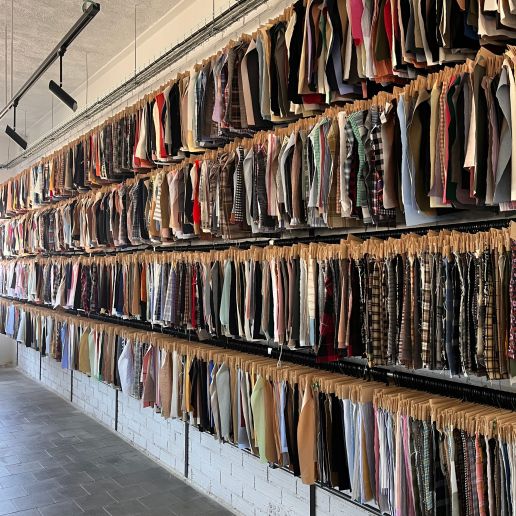
You have a garment production base in Turkey; what do you do differently?
We assist our customers in the entire development process. We can produce for any size Brand, from the big retail chains to the slow fashion brands.
SLCP audited your fabric, and you are JOIN LIFE certified; how important do you think certification is in the Textile industry?
More than 90% of our last year’s productions were sustainable, and Join Life. We believe that the textile industry needs to be committed to the highest social value to improve the earth’s condition.
How important is it to be unique yet still have a recognizable factor in your work?
Being unique and quirky is the key to this business s success. We continually experiment with new colours, bases, and constructions to look attractive. The creative part is where we invest most of our time and effort. We are surrounded by a team of experienced designers always aiming for the newest and best product construction/combinations. Our motto is: YOU ARE THE REASON WE CREATE FABRICS.
Did you face challenges during the pandemic? And how did you deal with them?
We had a lot of time to think and reshape our business model. We concluded that being unique and attractive is the key.
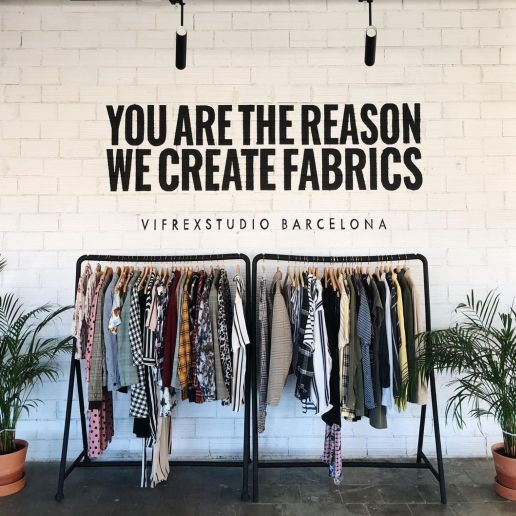
Is it hard to stay innovative?
Not at all; innovation and creation have always been our goals since we started in 2016. Without breaking boundaries, our day-to-day job will be useless.
How do you walk the line between being unique and having commercial appeal?
This could be the tricky part of our business model, but our team of engineers is constantly building new bases and constructions to be commercial and attractive.
What’s next for VIFREX Studio? What direction do you see your company taking in the coming years?
We are about to launch Vifrex Atelier. Our garment studio design centre. We will assist our customers in the development process. Form Fabric to garments.
Come along and meet the VIFREX Studio team at Hall S1 Stand E106.
MUNICH FABRIC START will be taking place from 30st August 2022 until the 1st September 2022.
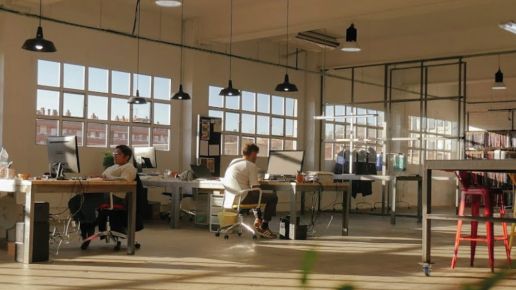
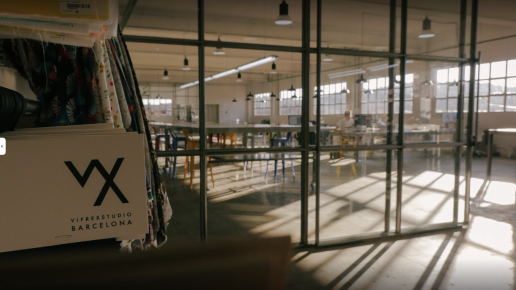
This might be also interesting for you
BLUEZONE Signature Spring.Summer 25 – Part III
23. April 2024
The aim is to showcase not only the Japanese heritage ofthe ancient hand-stitch technique but also to raise awareness about the significance of repairing and repurposing clothing.
Fabric Trends Spring.Summer 25 – Part VI
18. April 2024
With a rich legacy and a focus on sustainability, they offer a diverse range of ecofriendly fabrics like Modal, Tencel, Linen, Organic and Regenagri Cotton. Their commitment to quality meets the latest fashion trends through innovative designs.
The latest accessory developments for Spring.Summer 25 – Part III
16. April 2024
With new recycled materials and innovative dyeing techniques, they create environmentally friendly designs. Organic polyester gives additional sustainability, while customised designs emphasise personal style.
Honestly Hemp – Sustainable Innovations
11. April 2024
Her vision: to create an entire outfit made wholly from hemp fibre and end the stigma surrounding the plant.
Fabric Trends Spring.Summer 25 – Part V
9. April 2024
At the heart of this collection is Q-Cycle by Fulgar™, a revolutionary approach that incorporates end-of-life tires into the mass balance technology used during its production, minimizing waste and giving a new life to materials that would contribute to environmental challenges.
BLUEZONE Signature Spring.Summer 25 – Part II
4. April 2024
The designer has given free rein to his creativity to develop his vision of high quality, making increased use of ISKO's Ctrl+Z material science.
BioBase – Sustainable innovations
2. April 2024
The project targets the establishment of biobased polymers in the textile industry, demonstrating their full potential.
Fabric Trends Spring.Summer 25 – Part IV
28. March 2024
Summer, sun, well-being: Cooling materials such as cotton, linen, hemp is wanted as plain or combined qualities.
Blooming Minds – Sustainable Innovations
26. March 2024
Elizabeth’s research focuses on combining nature – especially the use of natural and recycled materials – and community, a social practice which weaves themes such as mental health while encouraging accessible creativity.
The latest accessory developments for Spring.Summer 25 – Part II
21. March 2024
The narrow fabrics combine excellent elasticity with sustainable materials and promote environmentally friendly practices.
The Material Revolution - Who is leading the charge?
In the past five years, groundbreaking science has been changing the clothing industry one experiment at a time. With a ravenous appetite for new fabrics, some great candidates have been castor bean-derived nylons, mushroom leather, and synthetic spider silks. Designed to correct some of the textile industry’s wrongs, new materials have been enticing the attention of some of the most prominent players in the fashion industry, which is an excellent thing.
Introducing Cutting Edge Atelier
As we enter a new material age, there has been an influx of fabric alternatives being researched and explored. So even though it may all seem pretty experimental right now, here are five companies making many of us believe that new materials will become the norm over traditional ones.
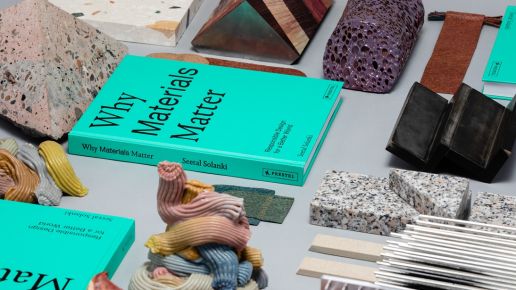
Picture credit:
Circular Systems
AlgiKnit
Is biology the future of fashion? Well, AlgiKnit seems to think so. The biomaterials company has been developing biomaterials that can play a vital role in the future of sustainable manufacturing.
By addressing the ecological damage caused by the fashion industry, AlgiKnit is making an impact by operating in a closed-loop product lifecycle that will bring sustainable bio-based textile alternatives to the footwear and apparel industries.
The biomaterials startup focuses on transforming the apparel ecosystem with rapidly renewable bio-based textiles. AlgiKnit has found a way of utilising materials with a significantly lower environmental footprint than conventional textiles. One of these materials is Kelp. Considered to be one of the fastest-growing organisms on earth – up to 10 times faster than bamboo. “Kelp is grown in aquatic farms around the world in coastal communities, often by fishermen and women, providing income during the fishing off-season,” states their site.
One of the benefits of Kelp, according to Fashion United is that it improves the environment by absorbing nutrients from agricultural and sewer run-off that can alter coastal settings. This recaptures nutrients for the next generation of biomaterials. Also, Algiknit’s biopolymer is entirely customisable.
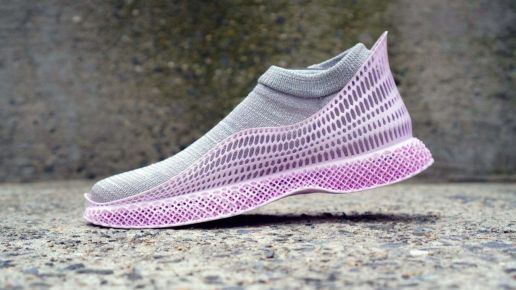
Picture credit: Algiknit

Picture credit: Algiknit
MyCoWorks
Founded by Philip Ross, Sophia Wang and Eddie Pavlu, the California startup MyCoWorks comprises a team of creative engineers, designers, and scientists. Their distinctive disciplines gave birth to a rapidly renewable natural resource called mycelium.
According to Insider.com, Mycelia are thread-like masses of fungi that grow underground. They run through almost every square inch of earth, delivering nutrients and allowing plants to “talk” to each other. MyCoWorks has innovatively used fungi to create a textile that performs like leather. On the mushroom-like material, Wang admitted to it being “a new thing in the world.”
So what does mycelium bring to the table? Well, MyCoWorks have presented mycelium as the solution to replace the resource-intensive product, leather. Relying on nature’s best tools, they have created a new kind of leather that can multiply from mycelium using a carbon-negative process. In addition, their custom-engineered material is sustainable, versatile, and animal-free. On MyCoWorks new leather, Dr Amanda Parkes, Chief Technology and Research at Manufacture NY, shared, “I believe we can solve all the world’s problems with mycelium biology”.
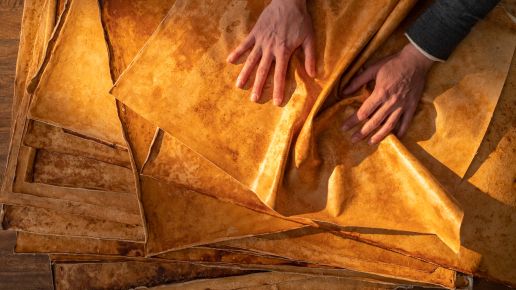
Picture credit: MyCoWorks
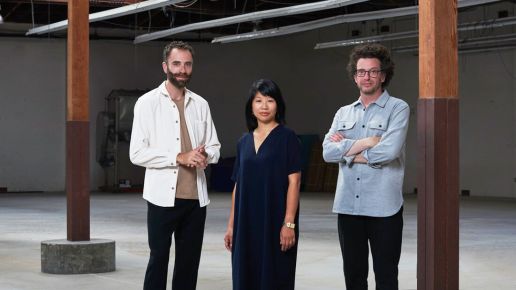
Picture credit: MyCoWorks
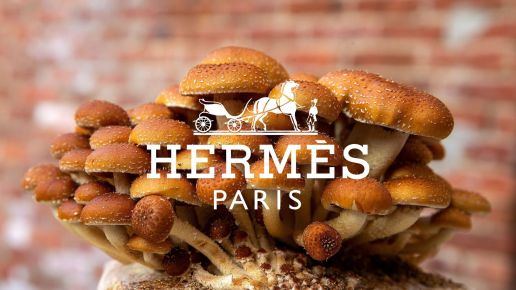
Picture credit: MyCoWorks
Desserto
Cactus vegan leather is nothing new. The material first came to our attention back in 2019. We wrote about how the two entrepreneurs, Adrián López Velarde and Marte Cázarez, developed and showcased their vegan leather material at the International Leather Fair Lineapelle 2019.
Made with cactus, the alternative to animal leather was heralded as a high resistance vegan cactus leather that would appeal to the fashion, interior and car industries.
Named Desserto, the cost-competitive material has been designed and developed to meet the most rigorous standards from the Aeronautic to the Fashion industries. That being said, not everyone has sung their praises. For example, Dr Ashley Holding and Paula Lorenz outed the Desserto material as partly vegan leather with cactus; the rest they described in a write-up was “undefined chemicals”. Although the founders have shared that the chemicals they use are non-toxic, it is not a truth revealed so openly by Desserto. Instead, the Mexican startup concentrated on the fact that their material was ‘PVC Free’ and did not contain a particular type of plastic.
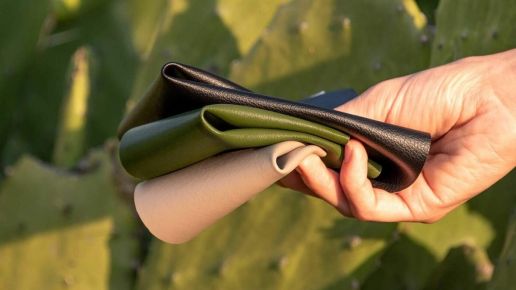
Picture credit: Desserto
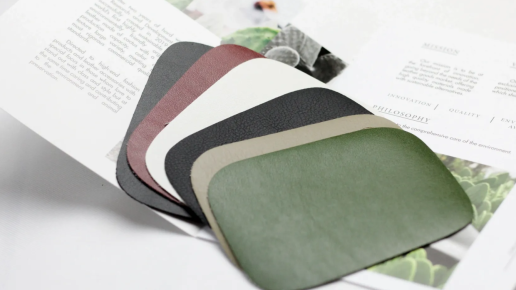
Picture credit: Desserto
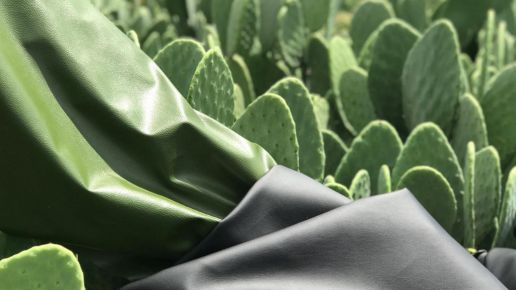
Picture credit: Desserto
Agraloop
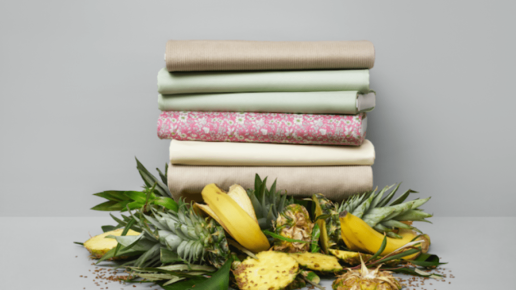
Picture credit: Agraloop
Agraloop has been busy transforming leftovers from food and medicine crops into scalable high-value natural fibre fashion products. The materials science company refines natural fibres from crops into a textile-grade fibre called Agraloop™ BioFibreTM.
“Our circular plus regenerative technologies provide systemic solutions for transforming waste into valuable fibre, yarn, and fabrics for the fashion industry,” states their website.
Mindfully sourced for circularity, Agraloop has developed a specialised wet processing technique; cellulose fibre from stems and leaves is purified into soft fibre bundles ready to spin into yarns. The Agraloop processes leftovers from various food and medicine crops, including oilseed hemp/flax, CBD hemp, banana, and pineapple.
Modern Meadow
Modern Meadow exists at the intersection of performance, scalable adoption and sustainability. The company began with an R&D initiative to develop a sustainable alternative to leather, which led to a breakthrough discovery of proteins as functional ingredients.
Harnessing the power of design, biology, and engineering, in 2017, Modern Meadow launched their prototype materials brand, ZOA. With the ability to impact a range of products across multiple industries, Modern Meadow state on their website: “Our experiments and exploration within ZOA led to the creation of Bio-Alloy™ and its application in a wide range of high-performing, low-waste bio fabricated materials, and our unique capabilities to create functional, animal-free proteins.”
Scaling by partnering with forward-thinking developers, manufacturers, and brands, Modern Meadow continues to educate industries on the possibilities of a biomaterial future.
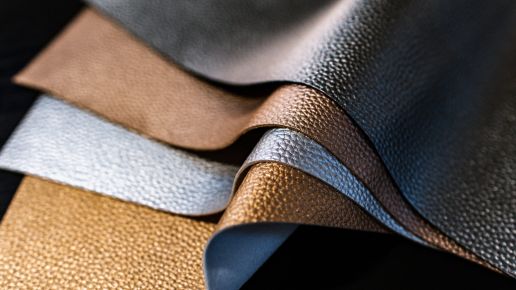
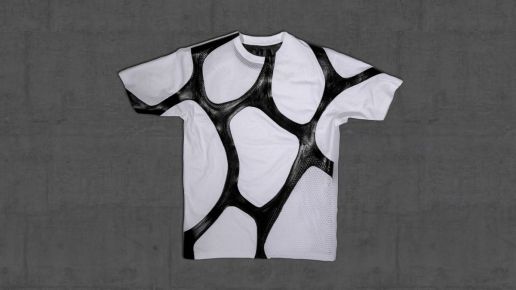
Picture credit:
Modern Meadow

About the author
Founding editor-in-chief of FashNerd.com, Muchaneta has worked in the fashion industry for over 14 years. She is currently one of the leading influencers speaking and writing about the merger of fashion with technology and wearable technology.
Muchaneta ten Napel | editor@fashnerd.com
———————————————————————–
Discover further industry-disrupting innovations at our upcoming shows:
Advancements and Innovation: Who is Busy Solving a $4.6 Billion Problem?
A ubiquitous wardrobe staple, denim is one of the most prevalent fabrics of our time. Developed through the ages, those behind the widely used material are on a mission to transform the global apparel business into a cleaner, more ethical and more sustainable industry.
It is no secret that denim production is negatively impacting the environment.
Still, the good news is that more and more manufacturers, brands, retailers, and consumers are making an immense effort to undertake the issues related to the production of denim. Furthermore, driven by buzz words like ‘sustainability’ and ‘recycling’, many denim businesses are turning to new technologies to help them attain the most sustainable system possible.
When the denim industry becomes more sustainable, we need a new approach. The good news is that the technology has advanced to the point where we can make a big difference in reducing the environmental footprint of denim. Here are some great examples of some of the revolutionary approaches that have been introduced to the denim industry in the past few years.
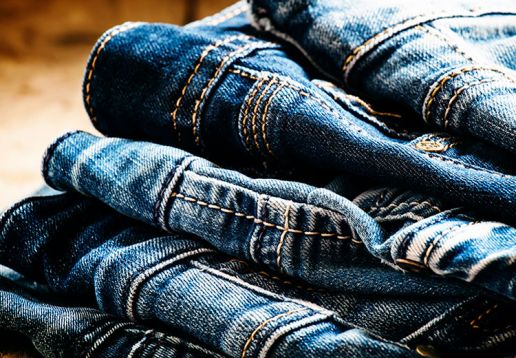
Picture credit: Ecotextile News
Smart Factory 4.0: Denim’s Greenest Ecosystem
Crescent Bahuman is taking the denim industry on a journey. Understanding the need for the industry to digitise, Zaki Saleemi, vice president of Crescent Bahuman, believes that one of the ways of doing this is through intelligent decisions supported by data.
Saleemi explained to Sourcing Journal that the intelligent factory is designed to give on-site managers real-time information on shop floor activity and other vital sustainability-related metrics like water measurements. The upgrade is a digitization plan that can help a denim company “get organised, get connected, get insights, and get optimised”.
Another exciting development is that Crescent Bahuman is also implementing the blockchain-enabled PaperTale, which shows the entire map of the supply chain – where the cotton came from, where it was manufactured, and where it got converted into fabric.
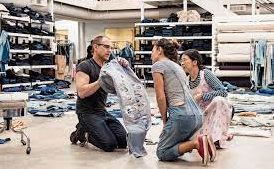
Picture credit: Levi
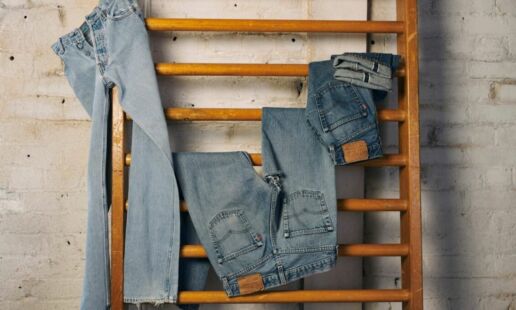
Picture credit: Levi Strauss
Levi’s Earth Conscious Robotic Technology
The majority of jeans are washed for hours to achieve that perfect blue colour, and the result is that the dyes end up polluting the groundwater. Looking back to a time when new innovation was leaving its mark on the denim industry, Levi came up with laser technology that made creating ripped and washed jeans easier and more efficient.
Looking to reduce the man-hours put in by designers trying to figure out the perfect fade and the time factory workers spend sandpapering the jeans, Levi’s is also determined to lessen the harsh chemicals that give jeans that much sought after faded look.
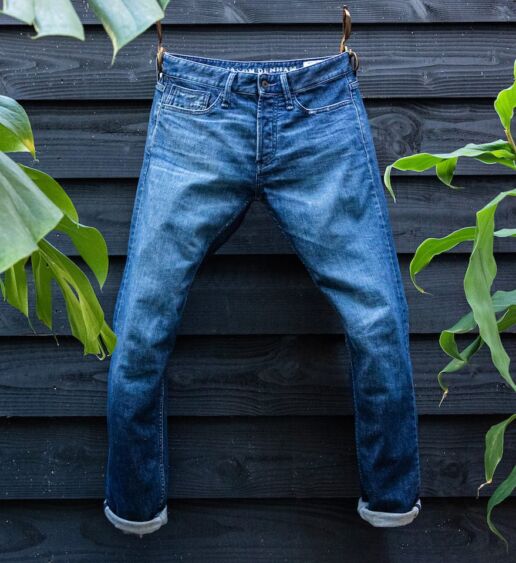
Picture credit: The Spin Off
Probing the use of Alternative Raw Materials
Exploring alternative raw materials such as hemp or orange pulp in textile production, Lenzing and denim manufacturer Candiani partnered to push the traditional boundaries of fibre production.
With similar environmental goals, Candiani’s biodegradable stretch denim made from Tencel Limited Edition yarns to the game contains 20% hemp fibre.
Again, Lenzing’s closed-loop manufacturing process has provided an excellent alternative to many classics – a new Tencel Limited Edition hemp soft fibre is an excellent alternative to many classics.
G-Star Raw: Pioneering New Means of Production
When it comes to sustainability, G-Star RAW is not only talking the talk; they are proving their commitment by continuously challenging the conventions of denim design.
Pioneering new means of production while maintaining an uncompromising dedication to quality and style, a few years ago, G-Star came up with a step-by-step process of how the Elwood RFTPi Jean came about. It was a process that pioneered a radical new dyeing method which is hydro and salt-free. They called the process Crystal Clear.
Considered to be the most radical change at the time when it comes to indigo dyeing process, the formula, even in its infancy, showed off its potential to play a part in saving the environment.
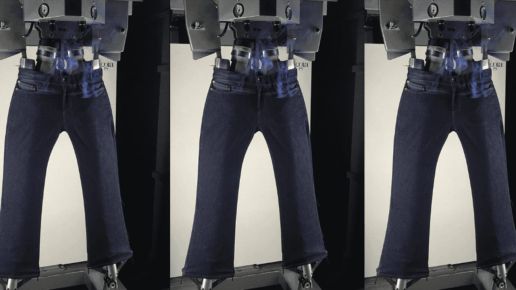
Picture credit: Fast Company
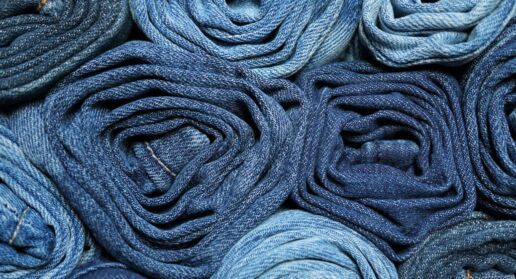
Picture credit: Science News for Students
Helping the Denim Industry Go Green
Combining economy and ecology, Sedo Engineering’s innovation is helping the denim industry go green. The Swiss innovation specialists have developed smart-INDIGO to help denim brands quickly move towards this sustainable production structure with more benefits at lower costs. Instead of toxic chemicals, Sedo Engineering uses only electricity and caustic soda to dissolve indigo dyes.
Giving out oxygen instead of toxic wastewater, smart-INDIGO reduces water use by 70 per cent, energy consumption by six times and carbon emission by ten times. The innovation is a “win-win solution for our clients”, says Werner Volkaert, managing director of Sedo Engineering.
With 17 smart-INDIGO machines operating worldwide, Sedo Engineering hopes to bring a revolutionary change to the denim industry.

About the author
Founding editor-in-chief of FashNerd.com, Muchaneta has worked in the fashion industry for over 14 years. She is currently one of the leading influencers speaking and writing about the merger of fashion with technology and wearable technology.
Muchaneta Ten Napel | editor@fashnerd.com
———————————————————————–
Don’t miss to explore more sustainable fabrics and trims
from international suppliers in our ReSOURCE area!
Also discover further industry-disrupting innovations at our upcoming shows in Munich this summer:
Recycling Textile Waste, Viable Solution or Short term plan?
With the rapid global increase in textile waste caused by the growth of the clothing and textile industry and fast fashion among consumers, textile recycling has become paramount.
The problem is that recycling textile is not an easy feat.
Many factors need to be considered. The most challenging obstacle to textile recycling is that the fabrics are often made from blended materials, and it is not easy to recycle mixed materials. This is mainly because each textile needs to be isolated before being effectively recycled. So as the fashion industry feels the pressure to move toward closed-loop production, what is the solution?
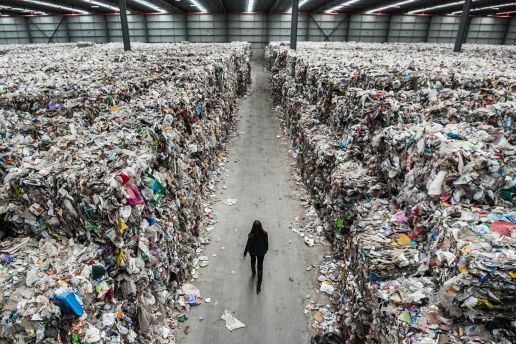
Picture credit: Rolling Stone
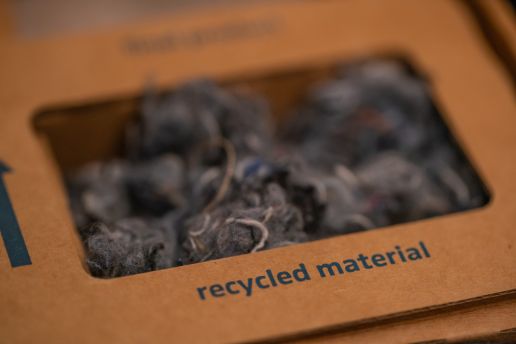
Picture credit: Pollima
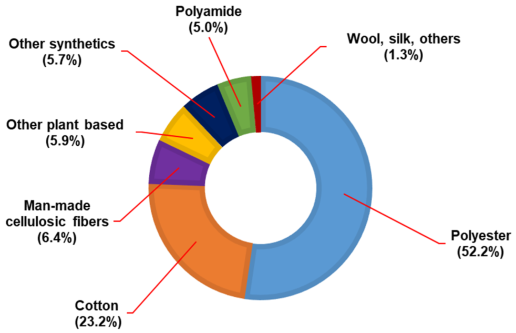
Picture credit: MDPI
Game-Changing Solutions Explained
Well, with various groundbreaking methods in the works, like the Hong Kong Research Institute of Textiles and Apparel (HKRITA), who came up with a solution that makes it possible to recycle blended material into new fabrics and yarns without any quality loss. They can do this thanks to a hydrothermal (chemical) process.
Working together with H&M Foundation, they successfully developed a process that can fully separate and recycle cotton and polyester blends. The recovered polyester material can be reused directly, creating new benefits of recycling without any quality loss. The hydrothermal process uses only heat, water and less than 5% biodegradable green chemical to self-separate cotton and polyester blends. This fibre-to-fibre recycling method is cost-effective, and there’s no secondary pollution to the environment, ensuring the life of the recycled material is prolonged sustainably. The technology will be licensed widely to provide broad market access and maximum impact.
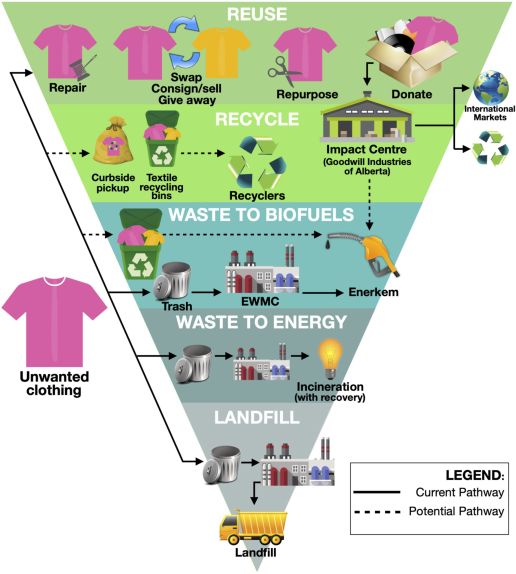
Picture credit: Sion Fraser University
Erik Bang, former Innovation Lead at H&M Foundation, shared:
“For too long, the fashion industry has not been able to recycle its products properly since there’s no commercially viable separation, sorting, and recycling technology available for the most popular materials such as cotton and polyester blends”. He continues, “This very encouraging finding has the potential to change that. We are very excited to develop this technology and scale it beyond the laboratory, which will benefit the global environment, people and communities.”
Then there is the Swedish company Södra. They have come up with a unique recycling solution that could influence how the fashion industry recycles its textiles.
Designed to enable large-scale textile recycling, the Södra, a significant forestry cooperative based in Växjö, Sweden, has come up with a unique solution that solves this fundamental obstacle to the textile industry. The pioneering solution makes it possible to recycle textiles on a large scale.
Using its resources and expertise for an innovative textile recycling solution, Södra has found a way to recycle fibres from blended fabrics on a large scale. They did this by enabling circular flows in the fashion and textile industry.
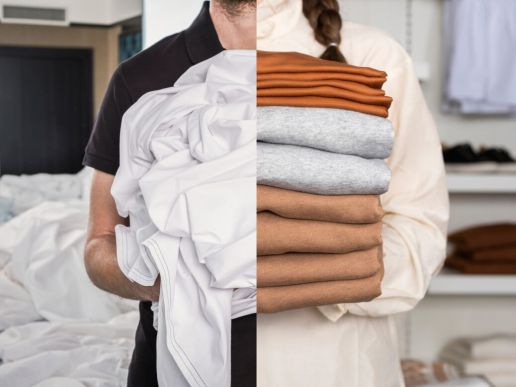
Picture credit: Södra
“Södra also has aggressive sustainability targets. We are, therefore, seeking companies with high sustainability ambitions that would like to partner with us in the delivery of textiles. That will determine our start-up and future production capacity” says Helena Claesson, Project Manager Södra.
Explaining the process further, Johannes Bogren, President of Södra Cell Bio-products, shared: “We are now redrawing the fashion and textile industry map by offering circular flows of textile fibres. A sweater can now become a sweater again. This will create added value for our customers, especially the fashion industry.”
The Fashion for Good Full Circle Textiles Project turned to innovative recycling technologies to close the loop on textile waste. The project’s objective was to explore the potential to reduce the environmental impact of textile waste; the textile-to-textile recycling solution has the potential to eliminate the industry’s dependence on virgin raw materials.
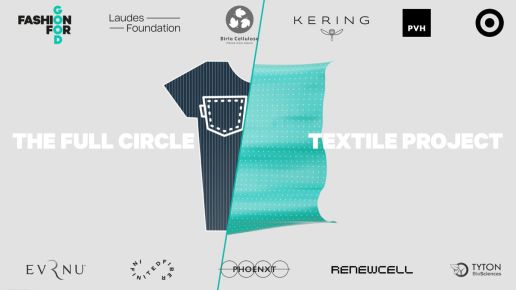
Picture credit: Fashion for Good
Supported by C&A, Martha Willis, Senior Manager of Sustainable Materials and Circular Innovation at C&A says: “This project will help us all in understanding the barriers, impacts and opportunities in the chemical recycling of polyester and is an important foundation to C&A’s commitment to connecting principles of circularity to 7 out of 10 of our products by 2028.”
Focusing on investigating economically viable and scalable solutions, the Full Circle Textiles Project has accomplished their objective scale of disruptive innovation in the industry and the capability of chemical recycling to accelerate circularity.
“The next phase of the project focuses on scaling these solutions and encourages brands, innovators, and supply chain partners to create long-term partnerships, catalyse funding to enable scaling, and leverage industry expertise to develop and implement these technologies further,” says Fashion For Good.
The C&A supported project, which was launched in September 2020, was successfully executed. Read the outcomes and learnings of the project here.
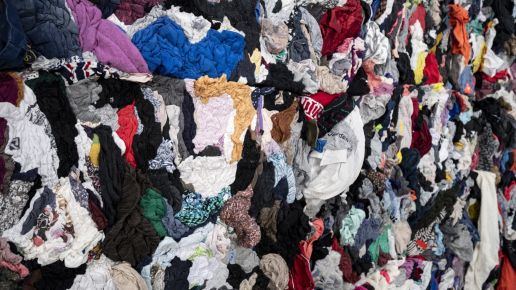
Picture credit: Nord News
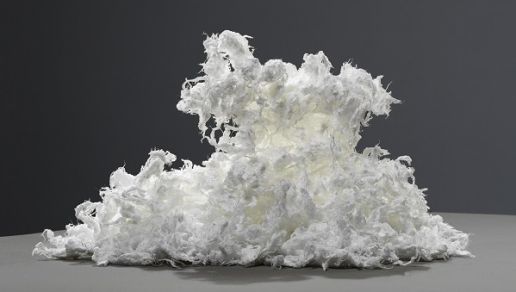
Picture credit: Eco Rebels
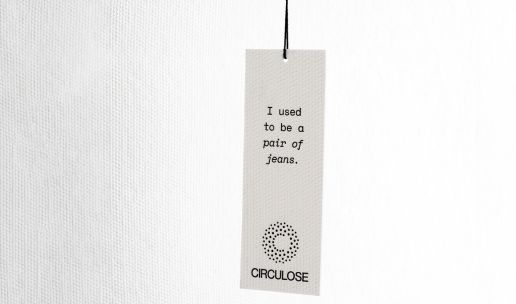
Picture credit: Nouryon
Conclusion
So is recycling textile waste a viable solution or short term plan?
I think that the aim should be to develop the infrastructure necessary to scale textile recycling, and to do this, fashion businesses need to take advantage of upcoming technological developments. By working together toward a common goal, we will get one step closer to a more sustainable textile recycling process, with the end goal of contributing to facilitating a circular economy.

About the author
Founding editor-in-chief of FashNerd.com, Muchaneta has worked in the fashion industry for over 14 years. She is currently one of the leading influencers speaking and writing about the merger of fashion with technology and wearable technology.
Muchaneta Kapfunde | editor@fashnerd.com
———————————————————————–
Discover further industry-disrupting innovations at our upcoming shows:
EVERY.BODY SS23 Trend #2 - SOUVENIR D'UN MOMENT
SOUVENIR D’UN MOMENT
- the joy of carefree happiness and the little things in life -
We are happy to present you the Spring.Summer 23 trend themes included in our MUNICH FABRIC START Trend Book. We hope the themes will give you the impression of what the next season will bring and that they will inspire you and spark new ideas for your future collections’ development.
SOUVENIR D’UN MOMENT is our second theme that is all about the search for happiness, joy and all the little things in life. This theme loves loose and relaxed, silky materials with hand-printed or regular prints and motifs. It definitely brings back this ‘Brigitte Bardot’ holiday vibe with a playful twist.
Even though, the moments of relaxation and joy are of highest importance within the SOUVENIR D’UN MOMENT theme, the sensuality, romance and a little bit of sex appeal are also crucial here. Shorts, midriff revealing tops and subtle cut-outs are the elements that represent the carefree aspect of SOUVENIR D’UN MOMENT. The overall feeling is that those colourful and intriguing textiles and cuts put you in a good mood and spread pure joie de vivre!
Playful details allow this theme to breathe with smiling ease
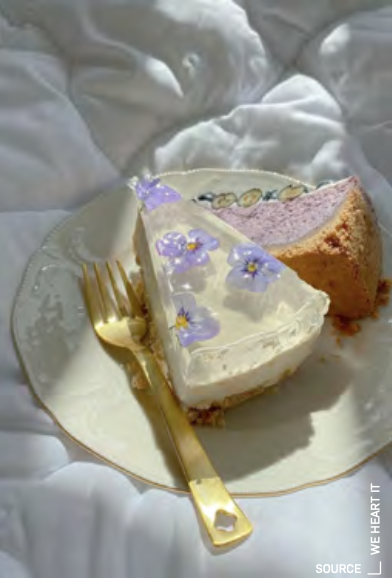
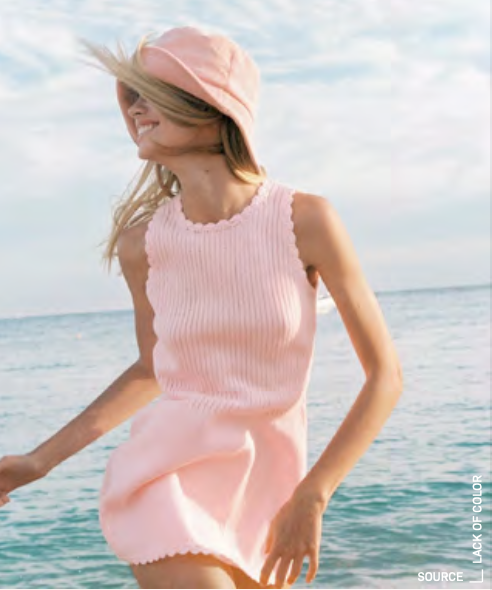
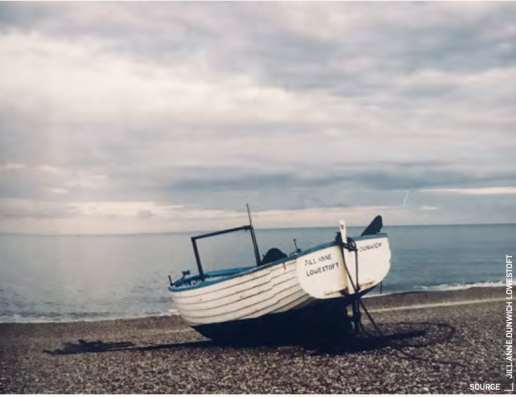
What colours stand out the most? Just imagine a poetic watercolour painting – calming blues, violets and yellow tones are paired with cool neutrals like matte greens and khaki. Off-whites and light-greys highlight the palette with perfect high-summer shades.
For more inspiration, order your own colour code that includes coloured yarns:
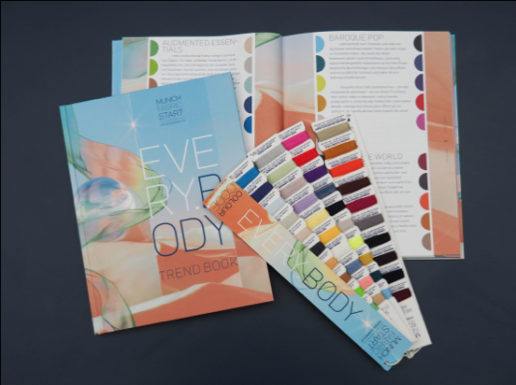
GET YOUR SPRING.SUMMER 23 TREND FORECAST
Last chance: SS 23 Trend Book & Colour Code – the optimal source of inspiration and information for your collection development.
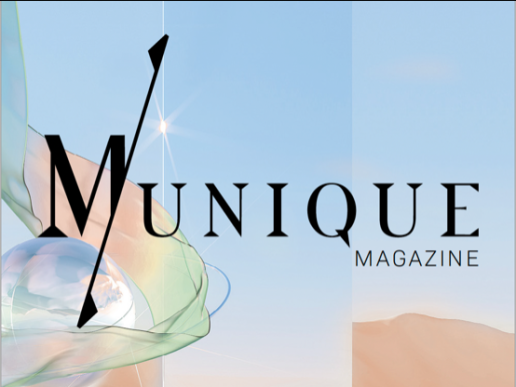
READ THE LAST MUNIQUE E-MAGAZINE ONLINE
The magazine offers insights with interviews, guest articles and innovative material from our international exhibitors.
The textiles showcased on our social media perfectly reflect everything that SOUVENIR.D’UN.MOMENT trend theme stands for. Visit our Instagram account
and look for an inspiration !
For more news about trends check out the following articles:
Get your Spring.Summer 23 Trend Forecast now
Spring.Summer 23 Trend #1: Augmented Essentials
ReSOURCE Fabrics highlight the industry's buzzwords: traceable, closed-loop, low impact
ReSOURCE is the sourcing platform for environmentally friendly and responsibly produced textiles, clothing and accessories. Search, discover and connect – all in one place. Source sustainable materials online at any time on www.resource-textiles.com
This season, we received more than 180 ReSOURCE materials – together with the samples for the Autumn.Winter 22/23 season, more than 560 innovative fabrics & additionals from 87 manufacturers are presented in our Brand & Material Search.
We have already introduced you to 10 other ReSOURCE Fabrics manufacturers in these two blog articles #1 & #2. Here are the next 5 most futuristic manufacturers with their sustainable developments for Spring.Summer 23 starring traceable or regenerated fabrics produced in a closed-loop or with eco-low chemical impact finishings:
- MANIFUTURA – Kadeks Tekstil
- Pastel by Yilmazipek
- Philea Textiles SAS
- Secen Tekstil
————————————————————————–
MANIFUTURA - Kadeks Tekstil
Manifutura is a pioneer when it comes to sustainable textile materials – it has been producing organic and sustainable fabric since 1993.
Manifutura is committed to use 100% sustainable materials.
Egedeniz Group and Manifutura ensures that at least 98% of the materials used throughout the supply chain come from sustainable materials. Materials are classified as sustainability in accordance with the preferred fibers criteria set by the Textile Exchange – a global nonprofit which develops, manages, and promotes sustainable industry standards. By being vertical integrated, Manifutura can ensure that sustainability objectives can be followed throughout the supply chain.
————————————————————————–
Pastel by Yilmazipek
Finding its inspiration in the rich textile heritage of Bursa, which has enclothed the world since time immemorial, Yılmazipek derives its strength from its creativity, its exacting production standards, experienced and dedicated team, and wholistic sustainability policies which respect man, nature and wellbeing of posterity.
Pastel’s core values? Integrity, Cooperation, quality, respect and fairness.
————————————————————————–
Philea Textiles SAS
A large part of PHILEA‘s collection is dedicated to premium quality linen or linen blends (Tencel, viscose, cotton) that are both comfortable and cool. The company also offers easy wear and easy care cotton/polyamid mixes for a sporty and contemporary look. Besides, fluid satin and crepe in viscose or viscose/acetate as well as FSC/ECOVERO viscose make a look feel fresh.
The collection, entirely designed and produced in France, guarantees a fully traceable and environmentally friendly supply chain.
<< Masters of Linen – 100% Made in Europe. Traceable fabric: Linen from Normandy, dry-spun (no use of water), woven, and finished (without chemicals) in France.
- Categories: Biodegradable, Eco Finished
- Composition: 100% Linen
- Weight: 230 g/sqm
- Certification: STANDARD 100 by Oeko-Tex®
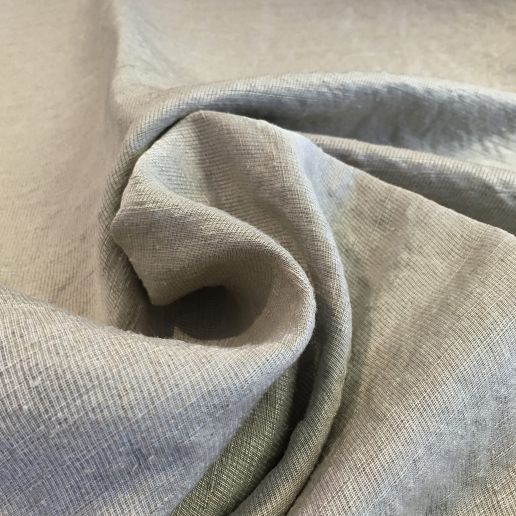
- Categories: Organic/Natural, Regenerated Celulosics
- Composition: 29% Acetate, 71% Linen
- Weight: 265 g/sqm
- Certifications: FSC, STANDARD 100 by Oeko-Tex®
- Speciality: Masters of Linen – 100% Made in Europe. Terre de Lin (inside) Traceable fabric: Linen from Normandy, dry-spun (no use of water), woven, and finished (without chemicals) in France
- Categories: Biodegradable, Eco Finished, Organic/Natural, Regenerated Celulosics
- Composition: 33% Linen, 67% Tencel®
- Weight: 210 g/sqm
- Certifications: STANDARD 100 by Oeko-Tex®
- Speciality: Tencel: cellulose based chemical fiber (Lenzing Technology: closed loop production process which transforms wood pulp into cellulosic fibers); Traceable fabric: Linen from Normandy, spun, woven, and finished in France. Eco-low chemical impact finishing, eco-traceability, eco-waterless.
- Categories: Biodegradable, Eco Finished, Organic/Natural, Regenerated Celulosics
- Composition: 82% Linen, 18% Tencel®
- Weight: 250 g/sqm
- Certifications: STANDARD 100 by Oeko-Tex®
- Speciality: Tencel: cellulose based chemical fiber (Lenzing Technology: closed loop production process which transforms wood pulp into cellulosic fibers); Traceable fabric: Master of Linen (Made 100% in Europe), Linen from Normandy, spun, woven, and finished in France.Chemical-free finishing, natural colour.
————————————————————————–
Secen Tekstil
Secen Tekstil constantly researches, follows and ponders new ways to reduce its carbon footprint.
When it comes to sustainability, yarn brands that have become the world’s standard are included in Secen’s production portfolio. Thanks to the collaborators such as Repreve, Ecovero, Naia, Viloft and Sorona, our products always get a passing grade from world clothing brands in terms of sustainability.
- Categories: Biodegradable, Regenerated Celulosics
- Composition: 30% Naia™, 25% Hemp, 45% Tencel®
- Weight: 185 g/sqm
- Certifications: FSC, STANDARD 100 by Oeko-Tex®
- Speciality: Eastman Naia™ cellulosic fiber, made with sustainably sourced wood.Tencel®: closed loop production process which transforms wood pulp into cellulosic fibers
————————————————————————–
Sustainable Innovations #6: Wearable muscles by MotorSkins
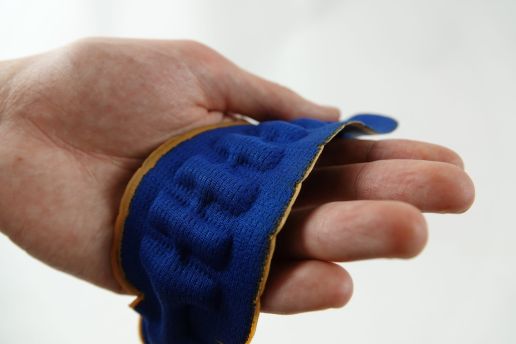
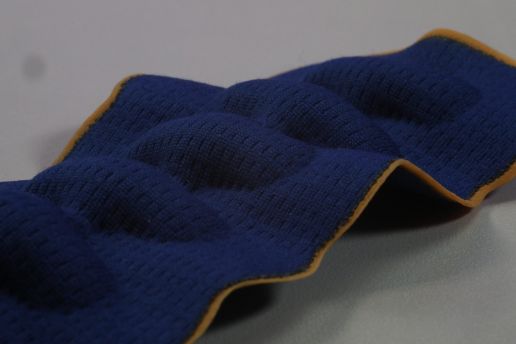
Innovative, intelligent, interactive: MotorSkins is a pioneering start-up in the field of shape-changing soft-robotic textiles. The Berlin-based company produces garments that help muscles move without any electronics such as batteries or motors – making them a pioneer in the industry. The first item produced is a compression garment for the legs.
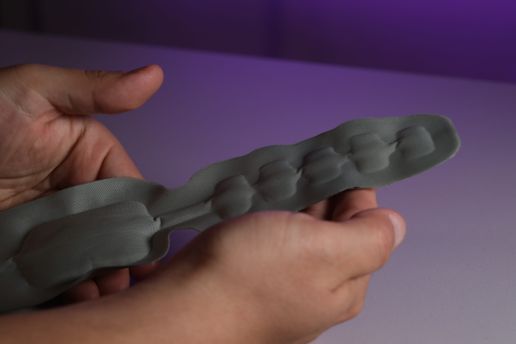
The special feature: the textiles are being stimulated by the movement of the users thanks to the new design and the innovative material. This creates a cycle: when the foot of the user compresses one part of the circuit against the floor (during a step), the pressure and volume are transferred to the active part, which powers it.
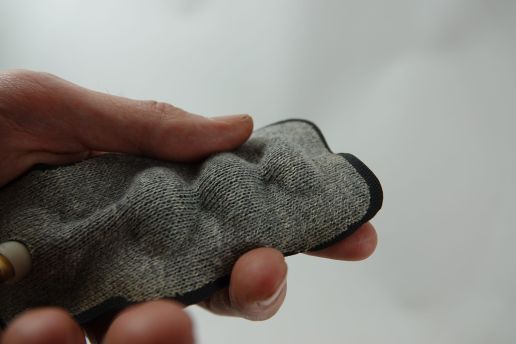
As an interface between sport, wellness and health, the start-up creates products that can be used medically, for relaxation or to support movement, depending on requirements. Currently, the young, international team at MotorSkins is working on textiles that are attached to the joints to make running easier – either for normal movements or also for illnesses. Inspired by nature, made for people.
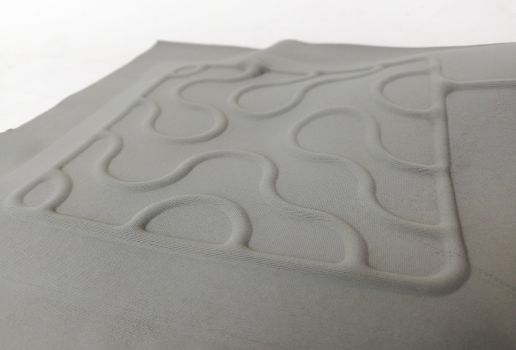
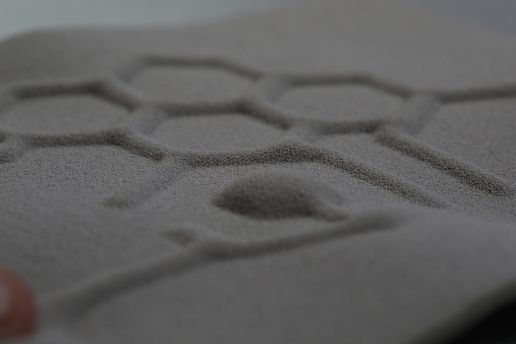
“MotorSkins technology bridges the functionality of soft-robotics with the versatility of textiles. We are a development platform for applications that explore human-machine interaction. Our technology creates a new paradigm of innovation in materials and sustainability where smart active elements are made without integrating electronics or batteries.”
– Juan Opitz-Silva
Follow on
For more information about SUSTAINABLE INNOVATIONS, see this interview with Simon Angel, curator of the Sustainable Innovations Forum, and the following articles:
“Pre-Action”: An interview with Simon Angel, curator of the Sustainable Innovations forum >>
“Biotic” by studio Lionne van Deursen >>
Flower matter by Irene Purasachit >>
Offcuts collection by Seok Park >>
Sunkolor by Panorama Fabrics >>
The explosion of summer colours - Additionals of the SS23
Although MUNICH FABRIC START and BLUEZONE couldn’t be realised physically in the end of January, we want to give our beloved exhibitors and long-term partners the chance to present their collections for Spring.Summer 23 online. We are presenting the most inspiring developments, prints and innovations in all our areas: FABRICS, ADDITIONALS, BLUEZONE, DESIGN STUDIOS, SOURCING & KEYHOUSE.
These Additionals’ developments by KAHAGE-Butonia Group, Landes Lederwaren, Panama Trimmings and REBIL Group Labeling & Packaging are a true explosion of colours. The newest collections of buttons, materials, trimmings & Co. include bio-based, plastic free, pure-dyed and 100% vegan materials.
KAHAGE-BUTONIA GROUP
KAHAGE-Butonia Group tries to escape reality for the Spring.Summer 23 season and presents new creative possibilities. A collection that, in addition to light and trendy polyester shapes, also largely consists of various recycled and organic materials. The focus is on the integration of eco and natural materials in classic summer shapes, as well as colorful and bold polyester, nylon and zamak buttons. All in all, a summery mix that invites you to dream.
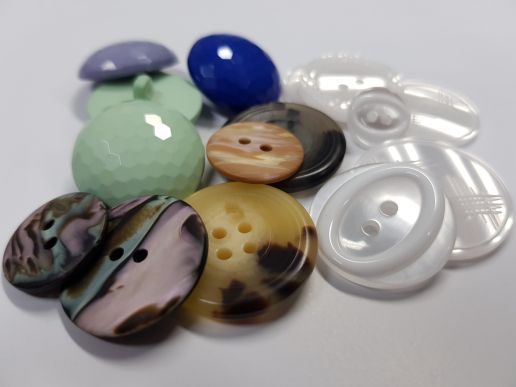
————————————————————————–
LANDES LEDERWAREN

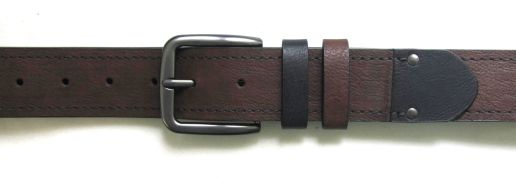
Medike Landes’ Spring.Summer 23 collection intends to express personality and spirit through unique materials and creative finishing techniques. The global manufacturer of labels, trims, and accessories is proud to market and sell MIRUM™, a 100% bio-based plastic-free material available in a wide range of textures and colours. MIRUM is a high-performance solution for designers and brands looking to decrease their CO2-footprint and expand their creative palette. Landes also offers belts for men, women and kids in different price levels with BSCI, ISO and LWG certificate.
————————————————————————–
PANAMA TRIMMINGS
BLUE WOAD: a colour full of history! The color Blue has a very long history while the woad have played a key role for the spread of blue dyeing. Ancient Egyptians were the first to use it to obtain blue color. Nowadays, going back to the origins, Panama Trimmings is searching alternatives for synthetic colors which are polluting and harmful. Woad matches the need of natural, traditional, and pure dyeing.
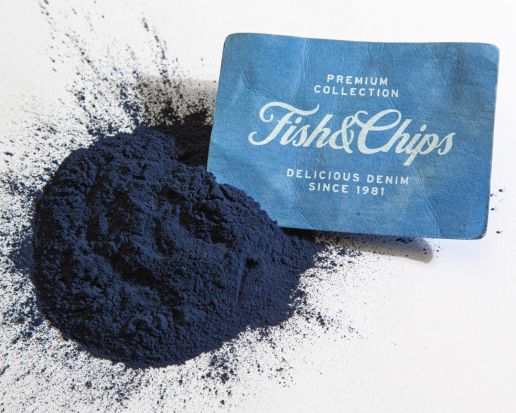
————————————————————————–
REBIL GROUP LABELLING & PACKAGING
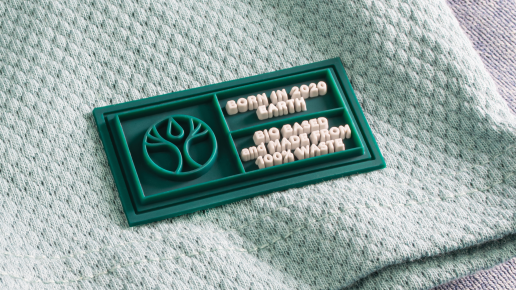
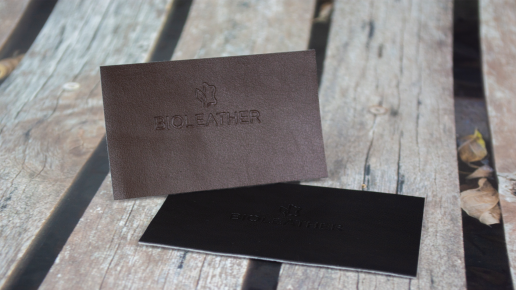
As one of the most innovative labels and packaging producers for global fashion brands for over 70 years, REBIL Group now produces with the environment in mind by offering plant-based and 100% vegan raw materials from OLIVE industry waste. The goal? To provide sustainable and customisable silicon and leather fashion labels as well as other leather products.
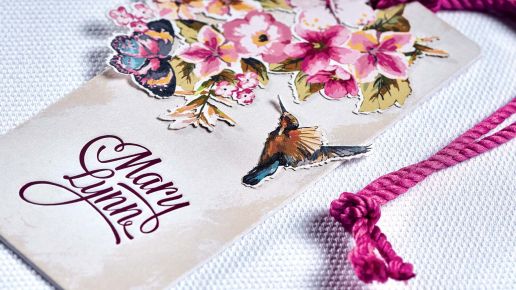
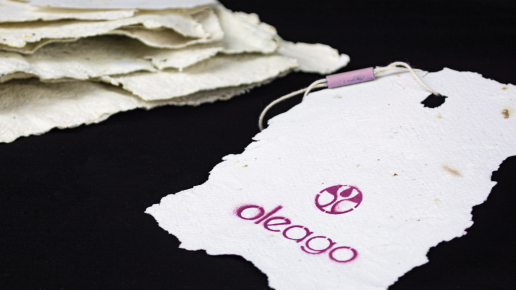

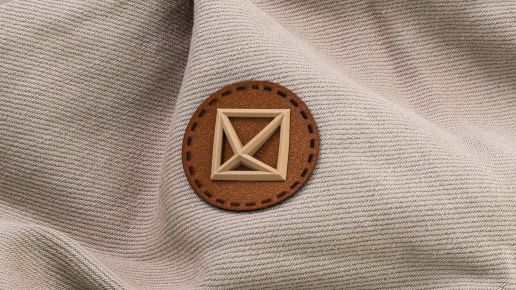
————————————————————————–
Discover more Spring.Summer 23 developments from the ADDITIONALS manufacturers in the following blog articles:
This season’s sustainable buttons, zippers & Co. are colourful & trendy
ADDITIONALS Spring.Summer 23: certified bio materials meet the latest styles
————————————————————————–

Sustainable Innovations #5: The Healing Imprint
Emotional healing through clothing – where science and textiles come together: The Healing Imprint explores the therapeutic potential of knitted garments. Bodysuits, gloves, socks and pillowcases are made to stimulate acupressure points on different parts of the body such as the hands, feet and head when moved. The custom-made textiles have grids through which small massage balls can be moved. By this, the acupressure points can be targeted.
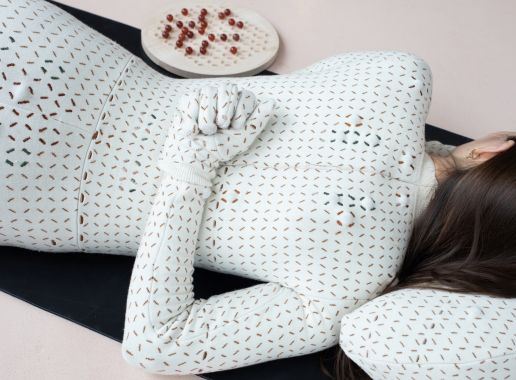
Laura Deschl is not only the designer of these special textiles, but also has a background as a yoga teacher – she used her knowledge to develop a yoga-based movement practice that uses one’s own body weight to increase pressure on certain points of the body. According to Deschl, trauma can also be worked through with this method. In combination with a trauma-sensitive yoga practice, the clothing thus becomes an individual tool that can release and dissolve even deeper emotions. The Healing Imprint shows how the fields of science, economics, medicine, psychology and textile production can be harmonised in an interdisciplinary way.
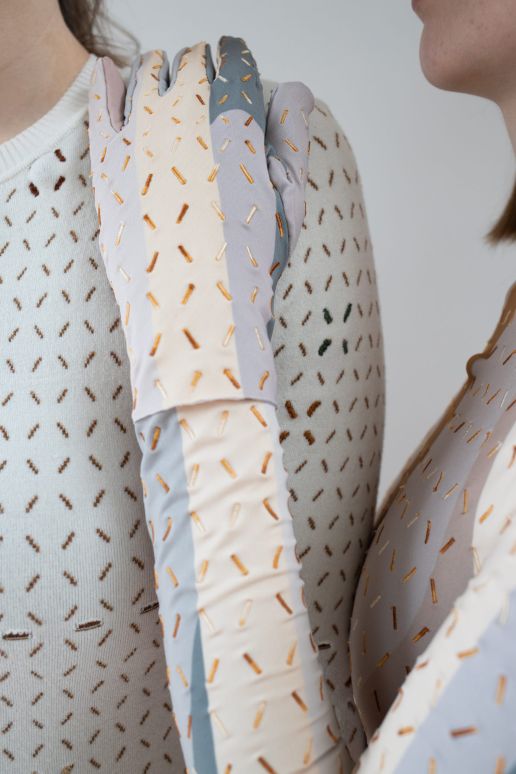
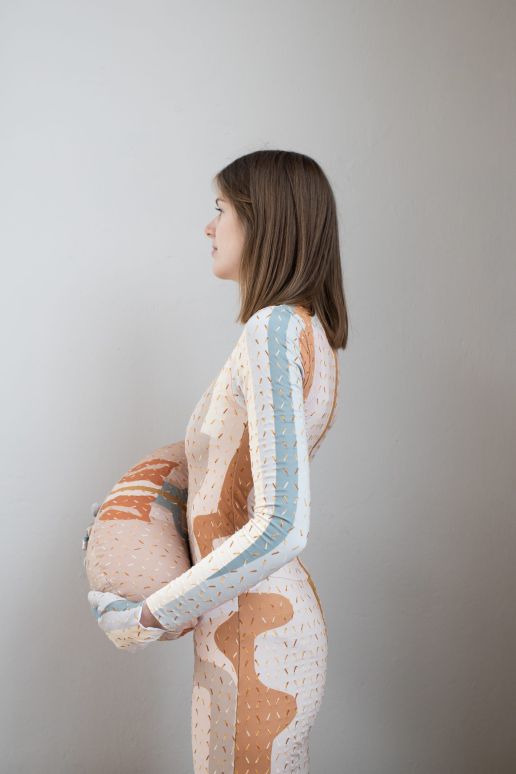
Allowing and feeling emotions: Mental illness and trauma are often still a rather invisible topic in society. One of Laura Deschl’s major concerns is therefore to draw attention to issues surrounding mental health and the traces of trauma on the body and to destigmatise them. Deschl wants to help patients train their body awareness and in this way bring them closer to their body again.
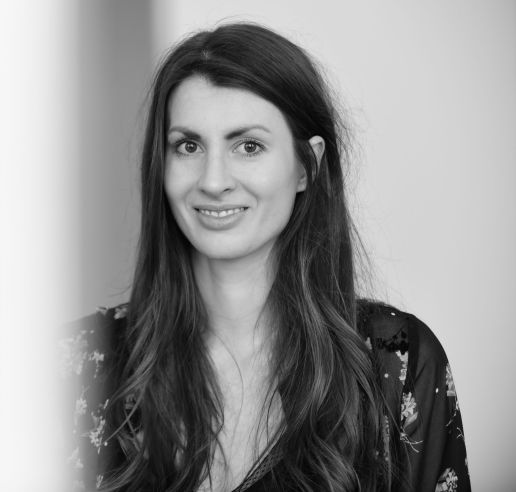
“With The Healing Imprint garments, the acupressure aims to help the wearer access buried memories or emotions, while the trauma-sensitive yoga practice facilitates introspection around those recollections. Considering that our society has an intense history of war, severe traumatisation and high exposure to everyday postwar stressors were common. These memories can get stored in the body’s memory and even be passed on over generations. Emotional wellbeing and healing is thus another angle to look at sustainability. A balanced body and mind are more likely enabling to make decisions that are in alignment with other humans and the planet.”
– Laura Deschl
Please find more info about SUSTAINABLE INNOVATIONS in this interview with Simon Angel, curator of the Sustainable Innovations Forum:
Interview about Pre-Creation, -Action and -Connection in our industry >>
Offcuts collection by Studio Popopo >>
Sunkolor by Panorama Fabrics >>


